+







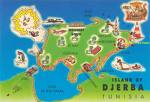
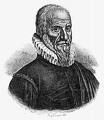




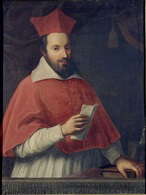
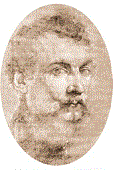
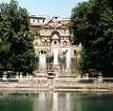
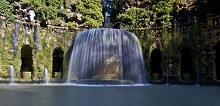
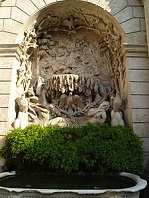


1560 Between this year and 1600 240K Spaniards emigrate to the Americas, incl. a number of conversos (Spaniards of Jewish ancestry); meanwhile the lucky few, incl. a brother of St. Teresa of Avila return with fortunes. On Apr. 10 after Catherine de' Medici calls him from Nice to succeed Francois Olivier, Michel de l'Hopital (1507-73) becomes chancellor of France, leading the Averagers (humanists who believe that Protestants and Roman Catholics can reconcile via reciprocal concessions), immediately working to get all Inquisition proceedings against heretics (esp. Protestants) suspended pending a gen. or nat. church council, and registering the Edict of Romorantin with the French parliament in May, becoming the beginning of freedom of religious conscience in France; he then gets an estates-gen. convoked in Dec. sans consent of Pope Pius IV, almost causing a split. On May 9-14 the naval Battle of Djerba sees the Turks under adm. Piyale (Piali) Pasha (1515-78) and the corsair Dragut Reis (1485-1565) defeat the mainly Spanish Holy League fleet under old fart Giovanni Andrea Doria (1466-1560) et al. near Djerba Island off Tunisia, sinking half its ships, then taking the Spanish fort at Djerba after 3-mo. siege; all 5K POWs are massacred, the bones forming 20-ft.-high Skull Fort, which lasts three cents. Scotland goes through a Protestant Reformation, one of those Pyrrhic victories as it ends its 250-y.-o. Auld Alliance with Roman Catholic France, which had kept it from being absorbed by the stanking English? On June 10 Mary of Guise (b. 1515) dies of dropsy after having been regent of Scotland for six years, and the Feb. 27 Treaty of Berwick along with the July 2 Treaty of Edinburgh formalize Elizabeth I's financial and military aid to the Protestant Lords of Scotland, who establish a council of regents for her daughter Mary, Queen of Scots, recognize Elizabeth, annul the now-pesky 1294 Auld Alliance, and expel the Catlicking French from Scotland; Elizabeth grumbles that William Cecil couldn't get the French to return Calais or reimburse her for the cost of the war, causing Cecil to blame Robert Dudley and begin plotting against him?; on Aug. 1 the Estates of Parliament meet, and order the ministers of the new Reformed Kirk (Church) of Scotland to draw up a Scots Confession of Faith (25 chapters), written in four days by the Six Johns, incl. John Knox (main writer), John Winram, John Spottiswoode, John Willock, John Douglas, and John Row, and approved by parliament on Aug. 27, which Mary, Queen of Scots refuses to approve, and has to wait for her overthrow in 1567; on Aug. 11 the Latin Mass is prohibited in Scotland, and on Aug. 17 Calvinistic Protestantism is officially established as the religion of Scotland; the Knox-backed Scottish Reformation, masterminded by the Lords of the Congregation is in like MacFlynn before Mary, Queen of Scots can do anything about it. In June the Battle of Okehazama sees Oda clan lord Oda Nobunaga (1534-82) defeat rival lord Imagawa Yoshimoto's attempt to capture Kyoto, kicking the butts of his 25K-man army with his 3K-man army, after which in 1562 he enters the city of Kyoto and sets up shop in Komaki Castle, beginning a new era of unification in Japan, starting by going after the rival Saito clan then proceeding to conquer the whole island, with the motto "Tenka Fubu" ("Everything Under the Sky"); In June Mother Annie Dowe of Brentwood, Essex starts a rumor that Dudley had made Queen Elizabeth preggers, and is arrested in Aug. and jailed after a closed trial; the rumors of a royal bastard keep spreading and many end up in jail or getting ears lopped - the Virgin Queen is an expensive dummy corporation? On Aug. 7 Ivan IV the Terrible's not-so-terrible first wife Anastasia (Gr. "resurrection") Romanovna (1530-60) dies, causing him to lose it and turn against his advisers and the boyars, whom he blames for her death; his reign starts to tank as he becomes a bitter insane sadistic tyrant who never forgets, and begins surrounding himself with a select group of noblemen whom he allows to exercise despotic power over his domain? On Aug. 21-26 after the first iconoclasm in Provence in spring, and a summer of Huguenot unrest from Anjou to Dauphine incl. Poitou, Guyenne, Perigord, Languedoc, and Provence, an assembly of notables in Fontainebelau, where Huguenot adm. Gaspard de Coligny reads a petition from Norman Protestants asking for freedom of religion; on Sept. 4/5 (night) armed Huguenot militants attempt to take over Lyon, pissing-off Francis II, who sends troops to quash them, and has the prince of Conde arrested on Oct. 31. On Sept. 29 Gustav I Vasa (b. 1496) dies, and his son Eric XIV (1533-77) becomes king of Sweden (until 1568), soon going insane, which he makes worse by killing several members of the Sture family in 1566; meanwhile Gustavus's 2nd son Duke Johan of Finland waits in the wings. On Dec. 5 after the first fireworks display in France is given in Amboise to celebrate the the accession of Francis II, the Amboise Conspiracy (Tumult of Amboise) by the Bourbon and Montmorency clans (led by Louis I of Bourbon, Prince of Conde and supported by Queen Elizabeth I and John Calvin) to seize Francis II (husband of Mary Stuart, Queen of Scots) and exterminate the House of Guise in order to save France is exposed and foiled, resulting in a massacre of Huguenots; on Dec. 5 Francis II (b. 1544) dies from a brain abscess six weeks before reaching the age of 17, leaving his wrongly-educated (woman stuff instead of statecraft) widow to return to Scotland, at first bitching and bawling then coming to realize the power is hers as ambassadors flock to her chambers with offers of royal marriage; after the French reject her idea of marrying Spanish Prince Don Carlos, she decides to return to Scotland, and 10-y.-o. Charles IX (1550-74) is crowned Valois king #12 of France (until May 30, 1574), with his mother Catherine de' Medici as queen regent, making her virtual ruler, proving to be a treacherous Macchiavellian type with the goal of royal power at any cost, which ends up demoralizing France; like all her children, Charles IX is a sickly disgusting prick (mentally unstable sadist subject to mad rages) who is betrothed at age 11 to Elizabeth of Austria; courtiers now openly quote Nostradamus' Century X, Quatrain 39 ("First son, widow, unfortunate marrage, without any children, two isles in discord"), which they claim predicts Francis II's death; meanwhile English ambassador Sir Nicholas Throckmorton is imprisoned by Duke Francis of Guise for suspected involvement in the Amboise Conspiracy, but talks his way out of it. Maximilian II, son and heir apparent of HRE Ferdinand I abandons his Lutheran leanings, causing a sigh of relief about a Protestant Holy Roman Empire, which had caused Philip II to formulate plans to succeed Ferdinand instead of him. The Portuguese destroy Villegagnon's French Protestant colony in Brazil. King Anthony of Navarre invites Theodore Beza to try and talk him into becoming a Protestant at Castle Nerac, but isn't converted. Robert Dudley's wife dies under mysterious circumstances. The Case of Martin Guerre, an imposter of a French Basque peasant (b. 1524) who lives with the real one's widow and son for three years is tried in Rieux, France; he almost survives until the real one, who had a leg amputated after the 1557 Spanish attack on St. Quenin and lived in a monastery to recuperate returns; the imposter is found to really be Arnaud du Tilh, and executed. The village of San Luis de Tampico in Tex. is founded by Spanish Franciscan Father Andres de Olmos, later becoming Tampico in Tamaulipas, Mexico. The Merchant Adventurers of London (founded 1407) is given a monopoly on exporting cloth to the Netherlands and W Germany, pissing-off their rivals, who force them to move their trading center (stape) from Amsterdam to Hamburg in 1567, and Dordrecht in 1655. Westminster School in London is founded by Elizabeth I. Italian polymath Giambattista della Porta (1535-1615) founds the Academia Secretorum Naturae (Accademia dei Segreti), the first modern scientific society in Naples; it is ordered closed by the Church in 1580. Franco-Flemish composer Orlando di Lasso (Orlande de Lassus) (1532-94) becomes court kappellmeister in Munich, founding the polyphonic Franco-Flemish School along with Roman organist-composer Giovanni Pierluigi da Palestrina (1525-94). A new system of silver coinage replaces the old debased one of the three previous reigns in England; a special mint is established, and owners of the debased coins have to turn them in and get new coins based on the actual (not face) value; prices fall to normal levels, and confidence in English money is restored - it takes a woman? French ambassador to Portugal Jean Nicot (1530-1600) imports the tobacco plant to Portugal, and sends some tobacco to Catherine de' Medici of France, who doctors her son Francis II with it, causing it to become known as the Queen's Herb; it is renamed Nicotiana tabacum. Italian architect Andrea Palladio (1508-80) moves to Venice (until 1580), designing a number of churches, all of them keepers. In this decade blonde beautiful Albanian babe Sophia (Sofia) Baffo (1550-1603) sails from Venice to visit relatives, and is captured by Muslim pirates, then sold into the sultan's harem of 250 women, working her way up to become the top concubine of Nur-Banu's son Murad III (1546-95) into the throne, pussy-whipping him enough to rule the Ottoman Empire behind the scenes as Sultan Safiye ("Pure One"), while Jewish harem mgr. (kira) Esperanza Malchi (-1600) (suspected lezzie lover) helps her lick her problems. After becoming the first Roman Catholic missionary in China in 1556, Father Gaspar Da Cruz pub. the first description of Chinese tea in Portuguese: "A drink called ch'a, which is somewhat bitter, red, and medicinal." After the accession of Queen Elizabeth I, high-class English women begin wearing large elaborate coiffures. French surgeon Ambroise Pare (Paré) (1510-90) describes the case of 15-y.-o. Champagne region farm girl Marie, who is leaping a ditch when something rips in her crotch, and a penis and two testicles descend through a rip in the skin; the bishop of Chalons rechristens him Germain, and a decade later he is an athletic man of medium height with a thick red beard. In July Villa d'Este on Lake Como in Tivoli (near Rome), Italy, commissioned by Cardinal (since 1538) Ippolito II d'Este (1509-7) (son of Lucrezia Borgia) and designed by architects Alberto Galvani and Pirro Ligorio (1512-83) is begun (finished 1575), developing the finest Renaissance garden in Italy AKA Tivoli Gardens; it becomes known for its 500 beautiful fountains incl. a Neptune water organ fountain, Fountain of Venus, and the Oval Fountain; too bad, d'Este loots the nearby 2nd cent. C.E. Hadrian's Villa for marbles and statues for his super villa, and never makes pope; The Uffizi in Florence is founded as an office for magistrates, after which the top floor is turned into a private art gallery and museum. Inventions: In this decade brass is first used in clocks and watches in Europe and England. In this decade visiting cards are used for the first time by German students in Italy. Nonfiction: William Baldwin (1515-63), The Funerals of King Edward the Sixth> Theodore Beza (1519-1605), Confession of Faith; Protestant bestseller that is widely translated for cents. Thomas Blundeville (1522-1606), The Arte of Ryding and Breakinge Greate Horses; first work on horsemanship (equitation) in English. Franciscus Patricius (1529-97), Della Historia Diece Dialoghi (Basel); takes a skeptical view of the possibility of historical knowledge. Novels: Hsu Wei, Ching P'ing Mei (The Plum in the Golden Vase); the first classic Chinese novel, a novel of manners and erotic realism - bring your own chopsockey FX? Art: Tintoretto (1518-94), Susanna and the Elders (1560-2). Paolo Veronese (1528-88), St. Geminianus and St. Severus. Births: Swiss botanist Gaspard (Caspar) Bauhin (d. 1624) on Jan. 17 in Basel. German surgeon ("the Father of German Surgery") Wilhelm Fabry of Hilden (Guilelmus Fabricius Hildanus) (d. 1634) on June 25 in Hilden; husband (1587-) of Marie Colinet (1560-1640). Hungarian witch-vampire and serial murderer ("Bloody Lady of Cachtice") Countess Elizabeth (Erzsebet) (Erzsébet) Bathory (Báthory) (d. 1614) on Aug. 7 in Nyirbator. Scottish poet "The Admirable" James Crichton (d. 1585) on Aug. 19. English explorer Sir Thomas "the Navigator" Cavendish (d. 1592) on Sept. 19 in Trimley St. Martin (near Ipswich), Suffolk; educated at Corpus Christi College, Cambridge U.; knighted in 1588. German Protestant Wettin elector of Saxony (1586-91) Christian I (d. 1591) on Oct. 29 in Dresden; son of Augustus I (1526-86) and Anna of Denmark; father of Christian II (1583-1611) and Johann Georg I (1585-1656). Dutch Reformed (free-will anti-predestination) theologian (founder of Arminianism) Jacobus (Jacob) Arminius (Harmensen) (Hermansz) (Jakob Hermanszoon) (d. 1609) on Oct. 10 in Oudewater-an-der-Yssel, Utrecht; educated at the U. of Leiden; opponent of Dutch Calvinist theologian Franciscus Gomarus; teacher of Simon Episcopius. Italian Baroque painter Annibale Carracci (Caracci) (d. 1609) on Nov. 3 in Bologna; rival of Michelangelo da Carivaggio (1571-1610). Dutch scholar-critic Jan Gruter (Gruytere) (d. 1627) on Dec. 3 in Antwerp; Dutch father, English mother. French minister (to Henri IV) Maximilien de Bethune (Béthune), Duke of Sully (d. 1641) (b. 1559?) on Dec. 13 in Rosny Chateau, Seine-St-Denis (near Mantes); created duke in 1606. Portuguese explorer Sebastiao Rodrigues Soromenho (Sebastian Rodriguez Cermeno) (Cermeño) (d. 1602) in Sesimbra. Spanish viceroy #9 of New Spain (1595-1603) Gaspar de Zuniga (Zúñiga) Acevedo y Fonseco, 5th Count of Monterrey (d. 1606) in Monterrey, Andalusia. English dramatist Henry Chettle (d. 1607). French Protestant explorer Pierre du Guast, Sieur de Monts (d. 1611) in Saint-Onge. Italian architect Flaminio (It. "Roman priest") Ponzio (d. 1613) in Viggiu (near Varese). French statesman-chef Guillaume Fouquet de la Varenne (d. 1616) in La Fleche; starts out in 1578 as cook for Catherine de Bourbon (1559-1604), wife of Henry II and sister of Henry IV, who makes him his portmanteau in 1580, after which he serves him for 30 years; knighted in 1598; created marquis in 1616. German alchemist Andreas Libavius (d. 1616). English mathematician-astronomer-explorer Thomas Harriot (Hariot) (Heriot) (Harriott) (d. 1621) in Oxford; educated at St. Mary Hall, Oxford U.; first Englishman to smoke tobacco?; introducer of the potato to the British Isles? English historian Sir John Hayward (d. 1627) near Felixstowe, Suffolk; educated at Pembroke College, Cambridge U.; knighted in 1619. Dutch city architect of Haarlem (1592-) Lieven de Key (d. 1627). English astrologian-theologian Richard Harvey (d. 1630) in Saffron Walden; brother of Gabriel Harvey (1552-1631) and John Harvey (1564-92); educated at Pembroke Hall, Cambridge U. British (Welsh) New River engineer Sir Hugh Myddleton (Middleton), 1st Baronet (d. 1631); brother of Sir Thomas Middleton (1550-1631) and William Middleton (1556-1621); created baronet in 1622. Italian painter Bartolommeo Carducci (Bartolome Carducho) (d. 1638) in Florence. English soldier-courtier Robert Carey, 1st Earl of Monmouth (d. 1639) in Arkestone, Herefordshire; youngest son of Henry Carey, 1st Baron Hunsdon (1526-96) (1st cousin of Elizabeth I) and Anne Morgan. Swiss surgeon Marie Colinet (d. 1640) in Geneva; wife (1587-) of Wilhelm Fabry (1560-1634). Deaths: Italian (Genoese) adm.-statesman Andrea Doria (b. 1468) in Genoa. Italian sculptor Baccio Bandinelli (b. 1493) on Feb. 6 in Florence. Swedish king (1523-60) Gustavus I (b. 1496) on Sept. 29 in Stockholm Palace. German Protestant humanist reformer Philipp Melanchthon (b. 1497) on Apr. 19 in Wittenberg. German Lutheran champion Philip I the Magnanimous of Hesse (b. 1504) on Mar. 31. Spanish explorer Juan de Salazar de Espinoza (b. 1508) in Asuncion, Paraguay. Spanish Dominican theologian-bishop Melchior Cano (b. 1509) on Sept. 30 in Toledo. French Renaissance sculptor-architect Jean Goujon (b. 1515) (d. 1565) in Bologna?; designed the Henry II staircase in the Louvre and the bas-relief Nymphs in the Fountain of the Innocents in Paris. French-born queen consort of Scotland (1538-42) Mary of Guise (b. 1515) on June 10 in Edinburgh (dropsy). French author-poet Joachim du Bellay (b. 1525); leaves 115 poems modeled after Plutarch - you seem kind of bummed out, why? French king (1559-60) Francis II (b. 1544) on Dec. 5 in Orleans.


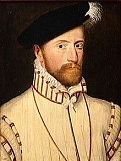



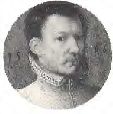





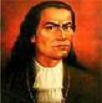
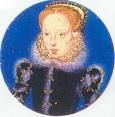
1561 In Jan. the Edict of Orleans grants toleration to French Huguenots, leading to the Edict of St. Germain next Jan. In Jan. Capt. Pedro de Urzua is killed by his own men, who mutiny under the leadership of Basque-descent conquistador Lope "El Loco" (the Madman) de Aguirre (1510-61) after they despair of finding El Dorado in the Amazon Basin and renounce allegiance to Spain, seeking to return to Peru and establish an independent kingdom; on Mar. 23 Aguirre makes his 186 men sign a statement acknowledging him as "Prince of Peru, Tierra Firme and Chile"; while marching through Venezuela, the Spanish defeat them and kill Aguirre in Barquisimeto on Oct. 27 after he murders his daughter Elvira for being "bedded by uncouth people", after which he is beheaded and his body quartered and sent to nearby towns; the story is depicted in the 1973 film Aguirre, Wrath of God. On Mar. 2 the Spaniards under Pedro del Castillo reach Cuyo, Chile and found the city of Mendoza (Ciudad de Mendoza del Nuevo Valle de La Rioja) in W Argentina (modern-day pop. 115K/1M), named after Chile gov. Garcia Hurtado de Mendoza, utilizing the old Huarpe irrigation system. On Mar. 6 after Spanish viceroy Luis de Velasco decides to replace incompetent Tristan de Luna as gov. of Pensacola, Angel de Villafane ((Ángel de Villafañe) 1504-?) arrives, and tries unsuccessfully to colonize the Carolinas, leaving 50 men to guard the Ochuse settlement, and taking the rest (230) to Santa Elena on the coast (modern-day Parris Island, S.C.), only to be struck by a hurricane, causing them to pack up and head back via Hispaniola and Cuba, telling Velasco that the region sucks, after which no Spanish attempt is made to settle NW Fla. for 135 years; meanwhile the French start to become interested. On Apr. 4 UFOs are seen over Nuremberg, Germany - aliens from outer space cause all human wars? In Apr. Francois (Francis) de Lorraine, 2nd Duke of Guise (1519-63) (younger brother of Charles of Guise, Cardinal of Lorraine), Anne, Duc de Montmorency (1493-1567), constable of France, and marshal Jacques d'Albon de Saint-Andre (Saint-André) (1505-62) form a triumvirate to undermine Catherine de' Medici's attempts at reconciliation with French Huguenots, with a double-pronged approach of allying with Spain and the pope while keeping the Calvinists from helping them militarily. On Aug. 7 (dawn) UFOs in the form of spheres are seen by the citizens of Basel, Switzerland. In Aug. Lady Catherine (Katherine) Grey (1540-68) (younger sister of Lady Jane Grey, who is next in line to the English throne after Elizabeth I) and Edward Seymour, 1st Earl of Hertford, 1st Duke of Somerset (1539-1621), who secretly married last Dec. and are found out are imprisoned in the Tower of London, but are allowed many comforts, incl. conjugal visits (without the queen's knowledge); she gives birth to 2nd son Thomas in Feb. 1563, making the queen furious at the prospect of yet another rival to the throne, ordering the lovers forever separated; Hertford is convicted by the Star Chamber of "deflowering a virgin of the blood royal in the queen's house" and fined £15K (later reduced to £3K); Sir Edward Warner, lt. of the Tower who had allowed the conjugal visits is sacked. On Aug. 14 tall widowed (and probably virtually virgin) 19-y.-o. Mary Stuart, Queen of Scots, accompanied by French biographer Pierre de Brantome, Seigneur de Bourdeille (1540-1640) leaves Calais, France for Scotland, being denied safe passage through England by her rival Elizabeth I (who sends aggressive warships to play cat and mouse, then changes her mind too late?), and lands at Leith on Aug. 19, where there is no welcoming committee because they didn't expect her so soon, but after they organize one they are wowed by this 6-ft. twos-company-threes-an-audience finishing school model with the walk and the talk, plus royal Stewart, Tudor, and Guise blood flowing in her unmarried what's-up-everybody royal veins; John Knox and other Protestants stand her up, and soon get in a war over who controls Scotland, starting with making a fuss over her going to Mass in Holyrood Chapel a few days later, being stopped from rioting after her half-brother Lord James Stewart intervenes and she declares that Scots can worship as they please, she is granted noblesse oblige and allowed to hear Mass in her private chapel; she then meets with John Knox (1505-72), and tells him to obey or be considered a traitor, which he brushes off, trying to convert her to Protestantism, calling a Catholic queen a "monstrous regiment"; Mary holes-up in quadrangular Holyrood Palace; Sir William Maitland of Lethington continues as her secy. of state, directing Scottish foreign policy for the next six years; James Hepburn, 4th Earl of Bothwell (1536-78), lord high adm. of Scotland, who was in the deputation of lords which conveyed her to her kingdom is made a privy councilor, but ends up getting kicked out of Edinburgh; Mary then begins an extensive tour of her kingdom (until 1567); meanwhile Elizabeth fears that taller-prettier Mary might marry a powerful Catholic prince and threaten her throne; their rivalry becomes the focal point of Anglo-Scottish relations for the next quarter cent. On Sept. 8 Elizabeth I arrives to take up residence at St. James' Palace in London, and 10K people turn out to see her. On Sept. 9 the Colloquy of Poissy, called by Catherine de' Medici at the convent of Poissy in France attempts to reconcile French Roman Catholics and Protestants, and after Theodore Beza gives a fine speech explaining Protestant beliefs, and debates Charles de Guise, Cardinal of Lorraine (1524-74), who chokes on the idea of giving up the Catholic Communion, the Catholics bring in their heavy gun, Jesuit gen. Diego Laynez (Lainez) (1512-65), and after he is through painting them as roasted wieners the colloquy breaks up on Oct. 7 with few if any minds changed; meanwhile the French Huguenots and major German theologians have no input, the latter arriving after it's over; French Huguenot potter Bernard de Palissy (1510-89), who ever seeks the secret of white enamel is set free, and appointed "inventor of rustic figurines" to Catherine de' Medici (until 1588); meanwhile the first Calvinist refugees from Flanders settle in England. In the fall Erik of Sweden (d. 1577) attempts to court Elizabeth I, but she toys with him until he gives up. In Nov. Elizabeth I is seen leaving Whitehall by a back exit in disguise to watch her real beau Robert Dudley in a shooting match; on Dec. 22 Dudley is admitted to membership in the Inner Temple of the Inns of Court after he supports them in a land dispute; on Dec. 28 plays are performed there with the theme that the queen should marry him; on Dec. 26 Elizabeth I restores the earldom of Warwick to Robert Dudley's brother Ambrose along with Warwick Castle and large tracts of land in the Midlands; meanwhile Robert Dudley secretly proposes to Philip II to restore Roman Catholicism to England if he will endorse his marriage to her. The Poles take over Livonia; the Baltic states of the Order of the Teutonic Knights are secularized; the Livonian Knights are disbanded, and their grandmaster becomes the first Duke of Courland under Polish suzerainty. Inca king Sayri Tupac dies in Cusco after accepting an offer from the Spaniards to move there; Manco's son Titu Cusi Yupanqui (Don Diego de Castro) (1529-71) becomes Inca (king) and agrees to let Roman Catholic priests enter Vilcabamba to preach. Valladolid burns down, and Philip II declares his hometown of Madrid the capital of Spain. St. Paul's Cathedral in London is badly damaged by a fire. The jealous Christian-run city council of Hagenau in Alsace, known as a fortified haven for wealthy Jews passes a regulation prohibiting non-resident Jews from attending the synagogue, under penalty of closing it; by now only six of the original houses settled by Jewish families in the 1160s are considered permanent, all other Jews being required to lease "temporary" houses at exorbitant fees, while all Jews are heavily taxed - who's zoomin' who? Catherine de' Medici terms snuff "Herbina Regina" after it cures her son Francis II's migraine headaches. After English Benedictines and Franciscans move in and establish seminaries, English College is founded in Douai (Douay) (Doway), N France under the patronage of Philip II and Pope Pius V, where exiled English priest (later cardinal) William Allen (1532-94) and other Assburger, er, Oxford U. alumni to train Jesuit missionaries for England, causing the word "seminarist" to become synonymous with traitor there - you big fat muscle-headed sack of rotten seminarist waste - you just called me a seminarist? Venetian humanist publisher (Aldine Press head) Paulus Manutius (1512-74) begins pub. books in Rome under the patronage of the popes. The Merchant Taylors' School in London is founded by headmaster Richard Mulcaster (1531-1611), becoming the largest school in England and taking on pupils incl. Edmund Spenser, Thomas Kyd, and Thomas Lodge, teaching Latin, Greek, music, drama, phys-ed incl. soccer ("footeball"), and "good manners". Sports: Spanish chess-playing bishop Rodrigo "Ruy" Lopez de Segura (1540-80) develops the modern technique of chess playing, incl. the Ruy Lopez Opening, and becomes the world's first chess champ. Architecture: The Basilica of St. Basil in Moscow (begun 1534) is finished. Cornelis Floris begins work on the Antwerp Town Hall (finished in 1572). Michelangelo designs St. Maria degli Angeli in Rome. Andrea Palladio designs the Convent of the Carita in Venice. Inventions: Pieter Breughel the Elder invents the first dredger for his soggy Low Country. Nonfiction: Guido de Bres (1522-67), The Belgic Confession of Faith; challenged by Jacobus Arminius, founder of Arminianism. Philibert Delorme (1514-70), New Inventions for Good Buildings and Small Fees (Nouvelles inventions pour bien bastir et à petits frais). Gabriele Falloppio (1523-62), Anatomy; his only work pub. during his lifetime. Sir Thomas Hoby (1530-66), The Courtyer of Count Baldesser Castilio; English tr. of Baldassare Castiglione's "Il Libro Del Cortegiano" (1527). John Knox (1513-72), The Scottish Confession of Faith; mainly the work of John Knox; the authorized Scottish creed for the next 2 cents. George North, The Description of Swedland, Gotland and Finland. Thomas Norton (tr.), John Calvin's "Institution of the Christian Religion"; originally pub. in 1536. ? (tr.), Julius Caesar's "Poetics". Plays: Thomas Sackville (1536-1608) and Thomas Norton (1532-84), Gorboduc, or Ferrex and Porrex (historical tragedy); first English drama written in blank verse; performed before Elizabeth I next Jan. 18 in the Inner Temple. Births: English brainy lawyer, essayist, statesman (MP and Lord Chancellor), historian and philosopher (gay) (inventor of the scientific method?) Sir Francis Bacon, Viscount St. Albans (d. 1626) (whose portrait bears a striking resemblance to actor Walter Pidgeon (1898-1984)?) on Jan. 22 [Aquarius] in Strand, London; son of Lord Keeper Sir Nicholas Bacon and William Cecil, Lord Burghley's sister; he and his elder brother Anthony are gay; "Of middling stature, his countenance had indented with age before he was old; his presence grave and comely" (Arthur Wilson); he tries to "purify" the science of astrology, and ends up renouncing stargazing? Spanish Baroque poet-dramatist Luis de Gongora (Góngora) y Argote (d. 1627) on July 11 in Cordoba; son of Francisco de Argote, chief magistrate of Cordoba, and blue-blooded Leonora de Gongora; his florid, elegant, exaggerated style becomes known as Gongorism, and later becomes a favorite target of mockery for inferior poets? English courtier-writer-poet (inventor of the flush toilet) Sir John Harington (Harrington) (d. 1612) on Aug. 4 in Kelston, Somerset; eldest son of pet Sir John Harington and Isabella Markham; "saucy godson" of Elizabeth I. Italian "Euridice" composer (1597 inventor of the opera) Jacopo Peri (d. 1633) on Aug. 20 in Rome; music dir. at the Medici court; inventor of the recitative, which goes between the aria and the chorus to move the action along. Spanish gov. of Rio de la Plata (1597-99) and Paraguay (1615-17) Hernando Arias de Saavedra (AKA Hernandarias) (d. 1634) on Sept. 10 in Asuncion, Paraguay; first Am.-born gov. of a New World Euro colony; husband of Jeronima de Contreras, daughter of Juan de Garay (1528-83). English lord Edward Seymour, Lord Beauchamp, 2nd Earl of Hertford (d. 1612) on Sept. 21 in the Tower of London; son of Edward Seymour, 1st earl of Hertford (1539-1621) and Lady Jane Grey's sister Catherine Grey (1540-68); husband of Honora Rogers; father of William Seymour, 2nd duke of Somerset (1588-1660). English Roman Catholic Jesuit priest-poet (St.) Robert Southwell (d. 1595). German mathematician Bartholomaeus (Barthelemy) (Bartholomeo) Pitiscus (d. 1613) in Gruenberg, Lower Silesia (modern-day Poland). Italian anatomist Giulio Casserio (d. 1616); successor to Fabrizio at Padua. English Renaissance poet and Calvinist theologian Mary Sidney Herbert, Countess of Pembroke (d. 1621) on Oct. 27 in Tickenhill, Bewdley; daughter of Sir Henry Sidney (1529-86) and Mary Dudley (daughter of Duke John Dudley of Northumberland, and sister of Robert Dudley, 1st earl of Leicester); wife (1577-) of Henry Herbert, 2nd earl of Pembroke (1534-1601); niece of Lady Jane Grey (1536-54); sister of Sir Philip Sidney (1554-86); mother of William Herbert, 3rd earl of Pembroke (1580-1630) (the young man described in Shakespeare's Sonnets?) and Philip Herbert, 4th earl of Pembroke, later becoming the "Incomparable Pair" to whom Shakespeare's First Folio is dedicated; most-educated woman in England after Elizabeth I; the real Shakespeare? Flemish Baroque painter Marcus Gheeraerts the Younger (d. 1636). Italian physician Santorio Santorii (Santorio) (d. 1636); founder of the scientific study of metabolism. English noble William Stanley, 6th Earl of Derby (d. 1642); son of Henry Stanley, 4th earl of Derby and Lady Margaret Clifford (1540-96); mother is heir to Elizabeth I under the Third Succession Act; the real Shakespeare? Deaths: French publisher Claude Garamond (b. 1480). Italian painter Ridolfo Ghirlandaio (b. 1483). Spanish painter-sculptor Alonso Berruguete (b. 1488). Polish-Lithuanian hetman Jan Amor Tarnowski (b. 1488) on May 16 in Wiewiorka, Poland. Ottoman scholar Ahmed Tashkopruluzade (b. 1495); leaves Miftah al-sa'ada (a compendium of all known knowledge), and Shaqa'iq al-nu'maniyaa (bio. dict. of 600 learned men). English surgeon Thomas Vicary (b. 1490) in London. Flemish painter Lancelot Blondeel (b. 1496). Dutch Mennonite founder Menno Simons (b. 1496) on Jan. 31 in Wustenfelde, Holstein: "The regenerated do not go to war nor engage in strife"; "True evangelical faith cannot lie dormant. It clothes the naked, feeds the hungry, comforts the sorrowful, shelters the destitute, serves those that harm it, binds up that which is wounded. It has become all things to all people." German painter Christoph Amberger (b. 1500). Spanish viceroy #5 of Peru (1556-61) Andres Hurtado de Mendoza, 3rd marquis of Canete (b. 1500) on Mar. 30 in Lima, Peru. German Roman Catholic bishop Michael Helding (b. 1506) on Sept. 30 in Merseburg. Spanish conquistador Lope de Aguirre (b. 1510) on Oct. 27 in Barquismeto, Venezuela (KIA). French musician Louis Bourgeois (b. 1510). Portuguese writer Jorge de Montemayor (b. 1520).



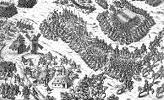



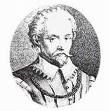








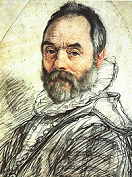
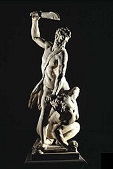
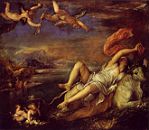
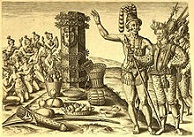
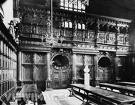
1562 The plague hits Paris again. One of these crazy crazy crazy nights I'm gonna find you, or, Take it, take another little piece of my heart, baby? On Jan. 17 after French regent Catherine de' Medici's chancellor Michel de l'Hopital convenes another colloquy to stop the Roman Catholic-Protestant feud by reason, the Edict of Saint-Germain (January) (the most liberal given French Protestants until the 1598 Edict of Nantes) suspends persecution of French Huguenots, officially recognizing them, but only granting limited toleration, forbidding public worship in towns but allowing it in suburbs; there are 2,150 French Huguenot congregations by now; too bad, the Vatican works to undermine it, and its terms aren't carried out, and papal legate Ippolito d'Este gets l'Hopital dismissed (until 1563); on Mar. 1 the Massacre of Vassy (Wassy) in Wassy-sur-Blaise in Haute-Marne sees Francois (Francis) de Lorraine, 2nd Duke of Guise (1519-63) (younger brother of Charles of Guise, Cardinal of Lorraine) returning from a conference with the Duke of Wurttemberg at Saverne, Alsace, where he convinced him that the Colloquy of Poissy had failed and Calvin is full of merde, then get pissed-off at seeing Huguenots holding Satanic religious ceremonies without benefit of true Catholic clergy, and order the church fired to send the devil spawns back to their father in Hell, killing 23 and wounding hundreds, starting the dog-eat-dog French Wars of Religion (ends 1598), eight bloody civil wars between the Roman Catholics and Protestant Huguenots in France, ending as a struggle for control of France by the Roman Catholic House of Guise (Lorraine) (descended from Norman knight Sir William Gyse, who fought with William I the Conqueror in the 1066 Battle of Hastings) (goes extinct in 1688), and the Protestant Huguenot House of Bourbon; the initial Huguenot leaders are Louis I of Bourbon, Prince of Conde (Condé) (1530-69) and Adm. Gaspard de Coligny (1519-72); the initial Roman Catholic leaders are Duke Francis of Guise and Catherine de' Medici; later Henri IV (Henry of Navarre) is the Huguenot leader, and Henry III the Catholic leader; the Huguenots obtain aid from England, Germany, and Switzerland, and the Catholics from Spain, and go to it - kill-kill-killing for the God of Love and just knowing that they will be saved in yummy-yummy-heaven? In Feb. French Huguenot Adm. Gaspard de Coligny does the Star Trek thang and sends a colonizing expedition to Fla. under the command of Jean Ribault (Ribaut) (1520-65), which arrives in Apr. then sails to Port Royal Sound, S.C., where it tries unsuccessfully to colonize Parris Island near Ft. Royal (near Beaufort), building Charlesfort; in June 1996 U. of S.C. profs. Chester DePratter and Stanley A. South announce discovery of the site; in June a 2nd expedition to Fla. under Rene Goulaine de Laudonniere (Laudonnière) (1529-87) arrives next year at the St. Johns River in Fla., then sails N to S.C., founding Ft. Caroline near modern-day Jacksonville, Fla., threatening the Spanish treasure fleets; the news causes Philip II to order their expulsion, appointing Spain's #1 adm. Don Pedro Menendez de Aviles as gov. of Fla. with the mission of driving out any settlers or pirates and then exploring and colonizing it once and for all; after all, Ponce de Leon claimed it for Spain way back in 1513; meanwhile French Calvinist artist Jacques le Moyne de Morgues (1533-88) accompanies them, making engravings of the local Timucua and Saturiwa tribes. On Mar. 25 Theodore Beza sends a circular letter to all the Protestant congregations, and travels to Orleans with the prince of Conde and his troops, then is sent as emissary to England, Germany and Switzerland to raise funds, returning on Sept. 4, after only Strasbourg and Basel turn him down. In the spring the Countess of Lennox and her darned son Lord Darnley are released from house arrest in London and received back into the queen's favor; the countess begins scheming to marry him to Mary, Queen of Scots, but hints at deposing Elizabeth, landing her in the Tower. In the summer Mary, Queen of Scots leaves Holyrood for a tour of Angus, Aberdeenshire, Banff, and Inverness, returning in the fall by a different E coast route. In Apr. the prince of Conde takes over Newhaven (modern-day Le Havre), causing English ambassador Sir Nicholas Throckmorton to talk Elizabeth I into sending a military expedition to aid the Huguenots, and in Sept. she signs a treaty pledging assistance to the Huguenots in return for their placing of the port of Newhaven in English hands as surety for the future restoration of Calais to the English; in Oct. she orders 6K men under Ambrose Dudley, earl of Warwick to sail to Newhaven and Dieppe, but after arriving they quarrel with the Huguenots, who turn against them. On May 12 the U. of Innsbruck in Tyrol, Austria is founded as a grammar school by Dutch Jesuit priest (St.) Peter Canisius (1521-97), opening for classes on June 24 under the direction of the Jesuits at the request of HRE Ferdinand I; in 1677 HRE Leopold I and Pope Innocent XI charter it as a univ. with four faculties; on Sept. 14, 1782 HRE Joseph reduces it to a lyceum, with Jesuit doctrines suppressed incl. "The Imitation of Christ" suppressed in 1773-1822, then reestablished in 1826 by Emperor Francis I under the name Leopold-Franzens-Universitat Innsbruck. On June 25 the French War of Religion reaches an uneasy peace, but war breaks out again in three weeks, causing Elizabeth I on July 15 to cancel a planned visit by Mary Stewart, Queen of Scots. On July 12 Yucatan Roman Catholic Bishop Diego de Landa holds an auto da fe, burning thousands of Mayan codices (books) and 5K Mayan religious images; he later admits to only 27 books; in 2014 a treasure trove of thousands of codices is discovered near Uxmal in the Yucatan Peninsula; Roman Catholic apologists call this book burning story part of the Black Legend, an alleged false attempt to smear Holy Mother Church - black as in soot? In Sept. Duke Francis of Guise sieges Huguenot-held Rouen, and takes it on Oct. 26 after 1 mo. 10-10-1562, Queen Liz Is Almost Through? On Oct. 10 English queen (since Nov. 17, 1558) Elizabeth I (1533-1603) falls sick with the smallpox at Hampton Court, and remains bedridden for six days, going into a coma for 24 hours on Oct. 16 and having a close brush with death which scares her subjects into a realization that there is no clear Protestant successor; on Oct. 17 physician Dr. Burcot (at the point of a dagger?) tries an old Arab cure recommended by English medieval physician John of Gaddesden, giving her a potion, wrapping her in red flannel and laying her on a pallet beside a fire, causing her to regain consciousness in two hours; on Oct. 17 she orders the councillors to appoint Robert Dudley as lord protector of England, with a salary of £20K a year, plus a £500 a year pension to his valet Tamworth, causing whispers that she is buying his silence for guarding them both when they are alone, causing her to protest that "although she loved... Lord Robert dearly, as God was her witness, nothing unseemly had ever passed between them"; she returns to her duties on Oct. 25, and only shows pox marks on her hands, although she goes bald and begins wearing wigs, starting a fashion vogue in Europe which lasts for cents.; meanwhile she gets into that lead and antimony-based white paint stuff for her face (to cover the officially nonexistent pox marks?), creating "the Mask of Youth", and probably neuters herself, how convenient for the Virgin Queen AKA the 16th cent. Madonna Like A Virgin; too bad, she starts a trend for women to covet pale skin, causing them to bleed themselves; meanwhile her councilors never intended to appoint Dudley?; Robert Dudley's sister Mary Dudley (mother of newborn brain babe Mary Dudley Sidney, a future candidate for the real Shakespeare) nurses Elizabeth I through the smallpox and gets it herself, becoming severely disfigured. What makes a man with shoulder pads move like a pro? On Oct. 28 after Mary, Queen of Scots creates her staunchly Protestant older half-brother James Stewart (one of numerous bastards of James V) as James Stewart (Stuart), 1st Earl of Moray (Murray) (1531-70), and he becomes her chief advisor; the first noble insurrection against Mary, led by the Earl of Huntly is defeated at the Battle of Corrichie (Corrichy) by the queen's forces, led by James Stewart and backed by the Cameron (Gael. "broken nose") clan; Huntly dies before his trial for treason; meanwhile the earl of Bothwell is imprisoned on a charge of attempting to seize the queen, escapes, is briefly imprisoned in the Tower of London, then flees to France until 1565). On Dec. 19 the Battle of Dreux sees the French Huguenots under Louis I of Bourbon, prince of Conde retreat after one of the bloodiest battles of the cent. with French Roman Catholics led by French constable-marshal Duke Anne de Montmorency (1493-1567), who is captured after his cavalry is routed early in the battle; but God is on the Catholics' side, as they not only win but capture Conde. HRE Ferdinand I signs an 8-year truce with Suleiman I the Magnificent, and recognizes John II as ruler of Transylvania; Hungary now has Austrian, Ottoman, and Transylvanian sections. Ferdinand I's son Maximilian II becomes king of the Romans (Germany) and king of Bohemia. Anthony of Navarre is killed in battle, and his 9-y.-o. son Henry of Navarre (b. 1553) (future Henri IV of France) succeeds him as king of Navarre. Catholic King Sigismund II of Poland abolishes ecclesiastical courts. English profiteer Sir John Hawkins (Hawkyns) (1532-95) (2nd cousin of Sir Francis Drake, who starts out as his apprentice) sails to the New World along with three ships, kidnapping 301 African slaves from a Portuguese slave ship in Sierre Leone before reaching Borbuta, Venezuela, then Rio Hacha in Colombia, selling the slaves for sugar, ginger, and pearls in Santo Domingo after flaunting the Spanish, who try to impose taxes, which he laughs off with a threat of burning them down, causing them to ban all English ships from trading in the West Indies; he then returns to England via the French colony in Fla., arriving next Sept., giving his backers a tidy 60% profit, becoming the first to run the Triangular Trade to the Spanish colonies in the Americas and make a profit, interesting Queen Elizabeth I, who takes shares in his expeditions in 1564 and 1567, during which he makes improvements to English ships that help them win against the Spanish Armada in 1588, for which he is promoted to rear adm., while he introduces tobacco smoking to English sailors, along with sweet potatoes; thanks to Hawkins late in this cent. the Transatlantic Triangular Slave Trade is developed between W Africa, the Caribbean, and Europe (ends early 19th cent.). After allying with the Scottish McDonnell clan who had settled in Antrim, Ireland, Shane O'Neill is inaugurated as The O'Neill, visiting Queen Elizabeth I in 1563 and claiming the title of 2nd Earl of Tyrone, who agrees to recognize his claims over Brian O'Neill, son of the assassinated Feardorcha, Baron of Dungannon on the condition that he submit to her authority and that of her deputy the Earl of Sussex, but the deal falls through when he demands a guarantee of his safety, causing Elizabeth I to establish Brian O'Neill in his place, only to see him KIA in Apr. in Shane's absence by Shane's Tanaiste (designated heir) Sir Turlough Luineach O'Neill (1532-95), after which Hugh O'Neill succeeds Brian as Baron of Dungannon, and when he returns Shane goes to war with the O'Donnells and MacDonnells to recognize his hegemony in Ulster, using his deal with Elizabeth I to justify turning on the Scots, burning Armagh Cathedral and fighting to a push in 1564 with Sorley Boy MacDonnell (Domhairle Buidhe Mac Domnhnaill) (1505-90) near Coleraine, and routing the MacDonnells at the Battle of Glentasie in N Ulster on May 2, 1565, killing 300-400; meanwhile in 1565 Sir Henry Sidney (1529-86) becomes lord deputy of Ireland, uttering the soundbyte: "Lucifer himself was not more puffed up with pride and ambition than O'Neill", causing the English to invade Donegal and restore the O'Donnells, while Shane O'Neill ravages the Pale, makes an unsuccessful attempt to take Dundalk, makes a truce with the MacDonnells, and seeks the help of the Earl of Desmond, losing the decisive Battle of Farsetmore near Letterkenny, County Donegal on May 8, 1567 to the O'Donnells of Tyrconnell, losing 600-1,300 KIA, ending Shane O'Neill's aspirations of becoming king of Ulster, fleeing to his enemies the MacDonnells hoping for an alliance, only to be assassinated by them on June 2 after they make a deal with Sir Henry Sidney and William Piers (1510-1603), Seneschal of Clandeboyne, cmdr. of the English garrison in Carrickfergus, who sends Shane's head to Dublin Castle, after Shane's death; Turlough Luineach O'Neill is inaugurated as The O'Neill (until Sept. 1595), managing to fight off the stankin' English despite his rep among the English of being a drunken bum. The Goa Inquistiion in SW India by the Portuguese Catholic Church begins (ends 1812), trying 16,202 by 1774, executing 57, and burning 64 in effigy, becoming their most violent inquisition; it is suspended in 1774-8; the inquisition causes Roman Catholic settlers to begin migrating N to Canara (Kanara) (until 1763), creating the Mangalorean Catholics. Pope Pius IV convokes the 3rd session of the Council of Trent, which had been suspended since 1552 (ends 1563). French #1 scholar Joseph Scaliger (1540-1609) travels to Italy, England, and Scotland, and becomes a Protestant. Spanish capt.-gen. Francisco de Ibarra (1539-75) becomes gov. of Nueva Vizcaya in New Spain, and begins its subjugation (ends 1570). HRE Maximilian II brings a Spanish horse to Austria and founds the court stud at Kladrub; in 1572 the Spanish Riding School is founded in Vienna, becoming the oldest classical dressage riding school to survive to modern times; in 1580 his brother Archduke Charles II founds another court stud at Lippiza (Lipca) in Slovenia, from which the Lipizzaner Stallions descend, which are later adopted by the Spanish Riding School - confusing Gen. George S. Patton Jr.? Fruit-and-nut man Giuseppe Arcimboldo (1527-93) becomes court portraitist to HRE Maximilian II in Vienna, and later to his fruity son Rudolf II in Prague. Italian violin maker Gasparo Bertolotti de Salo (1542-1609) moves to Brescia and gains fame. William I the Conqueror's tomb in Caen, France is robbed by vandals, who steal everything except a thighbone, which is interred in 1642 in another tomb; the latter is stolen by looters during the French Rev. Milled coins are introduced in England. The word "hoodwink" is coined in England to mean covering someone's eyes with a hood to blindfold them. Hans Wilhelm Kirchhof Kassel writes that Jews love their fattened goose livers. Architecture: The 101'x41' Elizabethan-style Middle Temple Hall in London is built. Nonfiction: John Michael Bruto (1515-93), Historia Florentina; pisses off the Medicis, causing him to flee to exile in Transylvania. Diego Gutierrez and Hieronymous Cock, Map of America; "the fourth part of the world". Gabriele Falloppio (1523-62), Observationes Anatomicae (posth.); claims he wrote it in 1557 and discovered the clitoris before Renaldus Columbus despite the 1559 pub. of his discovery - how could I have missed that? Rabelais (1495-1553), Pantagruel, Book Five (posth.). Jeronimo de Zurita y Castro (1512-80), Anales de la Corona de Aragon (History of the Kings of Aragon) (1562-80); first modern historical work in Spain, making use of researches in the libraries of Rome, Naples, and Sicily. Poetry: Arthur Brooke (Broke) (-1563), The Tragicall Historye of Romeus and Juliet; basis of Shakespeare's 1595 play "Romeo and Juliet". Torquato Tasso (1544-95), Rinaldo. Art: Giuseppe Arcimboldo (1527-93), Winter. Giambologna (1529-1608), Sampson Slaying a Philistine. Pieter Brueghel the Elder (1525-69), Two Chained Monkeys. Hans Eworth (1520-74), Margaret Audley, Duchess of Norfolk; Thomas Howard, 4th Duke of Norfolk. Tintoretto (1518-94), Christ at the Sea of Galilee. Titian (1477-1576), The Rape of Europa. Paolo Veronese (1528-88), The Marriage at Cana. Births: Italian duke of Savoy (1580-1630) Charles Emmanuel I (the Great) (d. 1630), AKA "Head of Fire" (Testa d'Feu) on Jan. 12 in Rivoli, Piedmont; only child of Duke Emmanuel Philibert (1528-80) and Margaret of France, Duchess of Berry (1523-74) (daughter of Francis I); husband (1585-) of Catherine Michelle of Spain (1567-97), daughter of Philip II and Elizabeth of Valois; father of Thomas Francis, prince of Carignano (1596-1656). Italian poet-librettist Ottavio Rinuccini (d. 1621) on Jan. 20; first opera librettist. Chinese Roman Catholic writer Xu Guangqi (Hsu Kuang-ch'i) (d. 1633) (AKA Paul) on Apr. 24 in Shanghai; one of the Three Pillars of Chinese Catholicism; beatified on Apr. 15, 2011. Dutch organist-composer Jan Pieterszoon Sweelinck (d. 1621) in Apr./May in Deventer. Japanese daimyo Kato Kiyomasa (d. 1611) on July 25 in Owari Province; his mother Ito is a cousin of Toyotomi Hideyoshi's mother, and he becomes his right hand man. Italian duke of Mantua and Montferrat (1587-1612) Vincenzo I Gonzaga (d. 1612) on Sept. 21 in Mantua; son of Guglielmo I of Mantua (1538-87) and Eleanora of Hapsburg; maternal grandson of HRE Ferdinand I and Anna of Bohemia-Hungary. English archbishop of Canterbury (1611-33) George Abbot (d. 1633) on Oct. 19 in Guildford, Surrey; educated at Balliol College, Oxford U. Spanish playwright-poet ("The Phoenix of Wits") ("The Monster of Nature") Lope de Vega y Carpio (d. 1635) on Nov. 25 in Madrid; first great dramatist of the Spanish Golden Age. German composer Philipp Dulichius (d. 1631) on Dec. 18 in Chemnitz. French adm.-marshal Charles de Gontaut, Duc de Biron (d. 1602); son of Armand de Gontaut (1524-92). English clergyman Thomas Brightman (d. 1607) in Nottingham; educated at Queens' College, Cambridge U. English poet-playwright-historian Samuel Daniel (d. 1619) near Taunton, Somerset; son of a music master; brother of musician John Daniel; educated at Magdalen Hall (Hertford College), Oxford U. English vice-adm. Sir Richard Hawkins (d. 1622); only son of Sir Jack Hawkins (1532-95); knighted in 1603. English organist-composer John Bull (d. 1628) in Radnorshire, Wales. English sci-fi writer and bishop-historian Francis Godwin (d. 1633) in Hannington, Northamptonshire; educated at Christ Church, Oxford U. English atty.-MP (Anne of Denmark's atty.-gen.) Sir Lawrence Hyde II (d. 1641); 2nd son of Lawrence Hyde I (-1590) and 2nd wife Anne Sibell; brother of Henry Hyde (1563-1634) and Sir Nicholas Hyde (1572-1631); educated at Magdalen Hall, Oxford U.; knighted in 1614. Deaths: German knight Gotz von Berlichingen (b. 1480) on July 23; subject of a play by Johann Wolfgang von Goethe. Italian novelist-poet Matteo Bandello (b. 1485). Italian painter Francesco Torbido (b. 1486) in Verona. French composer Claudin de Sermisy (b. 1490). Dutch Flemish composer Adrian Willaert (b. 1490) on Dec. 7 in Venice. French soldier Jacques d'Albon, Seigneur de Saint-Andre (b. 1505). Flemish-born English printer Thomas Geminus (b. 1510) in May in London. Spanish-born Italian duchess of Florence (1539-62) Eleanor of Toledo (b. 1522) on Dec. 17 in Pisa, Florence. Italian anatomist Gabriele Falloppio (b. 1523) on Oct. 9 in Padua. Italian Socinianism founder Laelius Socinus (b. 1525) in Zurich. French poet-courtier Pierre de Boscosel de Chastelard (b. 1540) in Edinburgh (executed) - the young die like bozos?



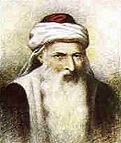



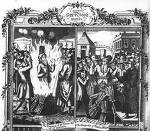
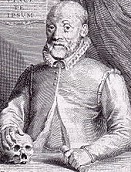
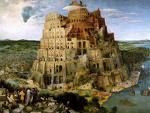
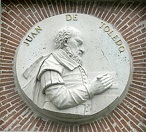
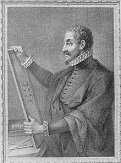
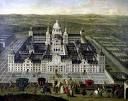
1563 The plague breaks out all over Europe; 20K die in London. On Jan. 11 Elizabeth I's Second Parliament meets, and presses her on the matter of succession, with both houses petitioning her to answer them. On Jan. 13 under the influence of architect Giorgio Vasari, Cosimo I de'Medici founds the Accademia e Compagnia delle Arti del Disegno (Academy and Co. for the Arts of Drawing) in Florence. On Feb. 18 the Roman Catholics under Duke Francis of Guise are about to capture Orleans from the Huguenots when he is wounded by Jean de Poltrot de Mere (Méré) (1537-63), a fanatical Huguenot whose swarthy complexion earned him the nickname "Espagnolet" (allowing him to act as a spy in the wars with Spain), who snuck into the Catholic camp and fired at the duke from ambush as he passed on the road; the duke dies on Feb. 24, and on Mar. 18 the Holy Catholic French have their fun with the Spic, er, Espagnolet heretic, torturing, drawing and quartering him, then hacking him to pieces with cutlasses when the horses can't pull him apart - Jesus wept, the Roman Pope laughed, go figure? On Feb. 22 Mary Stuart's secy., the obsessed hardly chaste French bozo poet-courtier Pierre de Boscosel de Chastelard (1540-62), former court poet of her hubby Francis II of France, who accompanied her to Scotland as a page of Marshal Damville and who exchanged love letters with her is found hiding under her bed at Rossend Castle on the night of Feb. 14 by Scottish lords jealous of his influence, and he is well, er, hung next year in Edinburgh - the first Valentine's Day massacre? On Mar. 19 the First French War of Religion (begun Mar. 1562) ends with the Edict of Pacification (Amboise), signed by Catherine de' Medici as regent for her son Charles IX, and Roman Catholics and Protestants unite to drive the English army in France from Le Havre (Newhaven), aided by a plague among the English invaders; after Elizabeth I sends ambassador Sir Nicholas Throckmorton to negotiate with Catherine de' Medici, she gets suspicious of the snake and places him under house arrest, and it takes until next year for Greek scholar Sir Thomas Smith (1513-77) (new French ambassador until 1566) to get him released, during which time the two become enemies; meanwhile pissed-off Theodore Beza heads back to Geneva after a 22-mo. absence, finding John Calvin ailing, alternating duties with him week-by-week until he croaks next May 27 and he takes over; in July Ambrose Dudley is shot in the leg by an enemy musket, and by the end of the month the English withdraw to England, bringing the plague with them, killing 20K by the end of summer; the English people blame the queen (a woman) for losing Calais, saying, "God help England and send it a king". On Apr. 10 Elizabeth I attends the closing ceremonies of the English Parliament, delivering a handwritten "answer answerless". In Apr. Elizabeth I orders atty. John Hales imprisoned for writing a pamphlet deriding Mary's claim to the English throne and supporting that of Lady Catherine Grey. In Apr.-June the Sieges of Oran and Mers El Kebi in N Africa by 100K Ottoman troops in 30 galleys led by Adm. Hasan Pasha, son of Hayreddin Barbarossa is ended by the arrival of a Spanish fleet under Francisco de Mendoza. In the spring Elizabeth I releases Lady Lennox from the Tower on the condition that she promise never again to scheme to marry her son off to Mary Stuart. In June Elizabeth I bestows Kenilworth Castle in Warwickshire (5 mi. S of Warwick Castle, residence of his brother Ambrose) to Robert Dudley, who proceeds to make it the most magnificent of all Elizabethan mansions. In the summer Mary, Queen of Scots leaves Edinburgh on a progress to Inverary Castle, Whithorn, Peebles and Holyrood, wowing the crowds. In Aug. 13-y.-o. Charles IX of France is declared of age in Rouen in order to give queen mother Catherine de' Medici maneuver room in her war with the pesky Guise family, and her adviser Michel de l'Hopital is recalled. On Oct. 20 Elizabeth I makes her beau Robert Dudley a privy councillor with a pension of £1K a year, then bestows the same on his rival Norfolk. Them Protestants got the devil's printing press, we Catholics got holy BBQ chefs? On Dec. 4 the Council of Trent (begun 1545) finally ends successfully with the aid of (St.) Carlo Borromeo (1538-1584), nephew of Pope Pius IV, who is known for his harsh ecclesiastical discipline; Pope Pius IV confirms the Council of Trent's Professio Fidei Tridentina, and issues it in his bull Injunctum Nobis on Nov. 13, 1565; the old problem brought up the pesky Arians is dealt with at the start: "I believe in one God, the Father Almighty, Maker of Heaven and Earth, and of all things visible and invisible. And in one Lord, Jesus Christ, the Only-begotten Son of God. Born of the Father before all ages. God of God, Light of Light, true God of true God. Begotten, not made, of one substance with the Father. By whom all things were made. Who for us men and for our salvation came down from heaven. And became incarnate by the Holy Spirit of the Virgin Mary: and was made man"; the One Truth Faith having been authoritatively laid out in black-and-white for everybody, and printed on the One True Printing Press of God, of course anybody publishing anything that doesn't fit in its cookie cutter must be a Satanic pawn, so Pope Pius IV also approves the Index Librorum Prohibitorum (Index of Prohibited Books) (Tridentine Index), which is pub. in Venice next year. Wilhelm von Grumbach (1503-67), gen. of Duke John Frederick II of Saxony captures and plunders Wurzburg, then forces the chapter and the bishop to restore it to hs duke, pissing-off HRE Maximilian III, who orders him to withdraw in vain; meanwhile Grumbach plots the assassination of rival Saxon elector Augustus I, causing him and the duke to be placed under the imperial ban by Nov., and Augustus to plan an invasion of the duke's capital of Gotha. The Russians conquer part of Livonia incl. Polotsk; it is returned to Lithuania in 1578. Maximilian II is elected king of Hungary, ending all doubts about succeeding his daddy HRE Ferdinand. Johan Vasa is imprisoned by his elder brother Eric XIV of Sweden (until 1567). Philip II, who stole his betrothed babe Princess Elizabeth of France decides that his son Don Carlos de Austria (1545-68) can't succeed him either, pissing him off and causing him to conspire against his daddy during the 1567 Netherlands revolt, causing Philip to imprison him in 1568 and order his death, giving dramatists a good story about dying with a little dignity? The English Parliament passes Acts for the Regulation of the Poor and the Regulation of Apprentices (repealed in 1814). The governorship of Tucuman (Tucumán) in Paraguay is established, under the jurisdiction of the audiencia of Charcas. Charles IX creates the Gardes Francaises (French Guards), which by 1635 has 9K men in 30 cos.; they are given special rights incl. choosing battle positions, leading an assault during a siege, choice of barracks, first postion in military parades, and special trial rights; they are disbanded on Aug. 31, 1798 after joining the French Rev., and form the core of Lafayette's Nat. Guard. The word "Puritan" is first used in England - I love you just because you're pure? The Convocation of 1563 (begun Jan. 1562) under Archbishop of Canterbury Matthew Parker reduces the English Articles of Religion of 1552 to the Thirty-Nine Articles, drafted as a doctrinal statement by a convocation of the Church of England; Parliament approves them in 1571; assent is still required by the Anglican clergy; they condemn several Roman Catholic beliefs and practices, incl. the power of the papacy, indulgences, reverence for saints and relics, transubstantiation, and the doctrine of Purgatory, affirming infant baptism and predestination and rejecting free will; all believers must obey the secular govt. and bear arms for it; Miles (Myles) Coverdale (1488-1569) becomes rector of St. Magnus (near London Bridge), but resigns in 1566 after refusing to conform with the Act of Uniformity. The Shulkhan (Shulchan) Arukh (Heb. "Set Table") Jewish law code is written in Safed, Palestine by Spanish-born rabbi Yosef Karo (Joseph ben Ephraim Karo) (1488-1575), and pub. in Venice in 1565, launching the age of the Acharonim (Heb. "last ones") poskim (legal judges), who succeed the Rishonim (Heb. "first ones"), who did the judging since the 11th cent., becoming the main Jewish law code to modern times. The first printing presses begin operation in Russia. The city of Durango in NW Mexico (first settled in 1556) (modern-day pop. 1.75M) is founded by silver-seeking Basque explorer Capt. Francisco de Ibarra (1534-75), who names it after his native town in Biscay, Spain, facing immediate challenges from the indigenous pop., who make it difficult to settle there. William Shakespeare's father John Shakespeare is appointed chamberlain for the Stratford Corp. (until 1564), authorizing a 2 shilling payment for "defasying ymages in ye chapel", as required by an English Reformation law passed by Edward VI in 1547. Architecture: Giovanni da Bologna begins the Neptune Fountain in Bologna, Italy (finished in 1567). The huge granite San Lorenzo de El Escorial (Span. "exhausted mine") Palace is begun for gold-rich Philip II of Spain in San Lorenzo de El Escorial 28 mi. NW of Madrid (finished in 1584), designed by Spanish architect Juan Bautista de Toledo (1515-67); when he dies his apprentice Juan de Herrera (1530-97) takes over - good name for the whole country? The Hofkirche dafwin Innsbruck is built, becoming the royal church of the HREs. Nonfiction: Melchior Cano (1509-60), Loci Theologicis (posth.) (Salamanca); #2 Roman Catholic theological work after Thomas Aquinas? John Foxe (1516-87), Foxe's Book of Martyrs (Acts and Monuments of these Latter and Perillous Days, Touching Matters of the Church) (2 vols.) (Mar. 20); makes him "England's first literary celebrity", selling for 10 shillings (3 weeks' pay), even though he receives no royalties; Pt. 1 is about persecution, torture, and burning of early Christian martyrs, Pt. 2 is about the reign of Henry VII and Edward VI, and Pt. 3 is about the burning of Protestants by Roman Candle Catholics under Bloody Mary, all detailed with relish in a 2-vol. 2.3K-page superbook (largest pub. project in England to date), complete with gruesome woodcuts, convincingly portraying the Pope as the Antichrist, and England as the new Chosen Nation of Israel, which God has picked to save Da WQorld; becomes the #2 bestseller in England after the Bible, and starting with the 2nd ed. in 1570 every cathedral church in England is ordered to carry a copy; deeply influences William Bradford, founder of Plymouth Colony, becoming the theme for all future U.S. Protestant-dominated govts.? Gerardus Mercator (1512-94), Map of Lorraine; first accurate one (lost). Garcia de Orta (1501-68), Conversations on the simples, drugs and materia medica of India and also on some fruits found there, in which some matters relevant to medicine, practice, and other matters good to know are discussed (Colóquios dos simples e drogas he cousas medicinais da Índia e assi dalguas frutas achadas nella onde se tratam alguas cousas tocantes a medicina, pratica, e outras cousas boas pera saber) (Apr. 10) (Goa); first Euro to catalog Indian medicinal herbs in their native habitat, pioneering tropical medicine. Giambattista della Porta (1535-1615), De Furtivis Literarum (On Secret Writing); on cryptography. Portuguese (Goa) physician Garcia da Orta (1490-1570), Colloquies on the Simples and Drugs of India; the 3rd book printed in India; a favorite with herbalists and explorers, esp. when it discusses marijuana. Ambroise Pare (1509-90), Cinq Livres de Chirurgie (Five Books on Surgery). Johann Weyer (1515-88), De Praestigiis Daemonum et Incantationibus ac Venificiis (On the Illusions of the Demons and on Spells and Poisons); the appendix lists the names and titles of infernal spirits along with their powers, which is circulated independently. Art: Pieter Brueghel the Elder (1525-69), The Tower of Babel. Births: Dutch Calvinist (anti-Arminian) theologian Franciscus Gomarus (d. 1641) on Jan. 30 in Bruges; family flees to the Palatinate in 1577. English secy. of state (1596-1612), lord high treasurer (1608-12), and lord privy seal (1598-1608) (spymaster) Robert Cecil, 1st Earl of Salisbury (d. 1612) on June 1 in Westminster; son of William Cecil, 1st Baron Burghley (1520-98); half-brother of Thomas Cecil, 1st Earl of Exeter (1542-1623); a nursemaid allegedly drops him in infancy, causing his back to be deformed and his growth to be stunted, after which Elizabeth I calls him her "elf" or "pygmy"; educated at St. John's College, Cambridge U.; created baron in 1603, viscount in 1604, and earl in 1605. Chinse Ming emperor #13 (1572-1620) Wanli ("ten thousand calendars") (Zhu Yijun) (d. 1620) on Sept. 4; 3rd son of Longqing (1537-72); father of Taichang (1582-1620). English lord-lt. of Ireland Charles Blount (pr. like blunt), 8th Baron Mountjoy and 1st Earl of Devonshire (d. 1606) in Hooke Park, Dorset. Dutch merchant Jan Huyghen van Linschoten (d. 1611) in Haarlem; grows up in Enkhuizen. English inventor William Lee (d. 1614) in Calverton, Nottinghamshire; educated at Christ's College and St. John's College, Cambridge U. English lord high adm. Thomas Seymour (d. 1619) in the Tower of London; son of Edward Seymour, 1st earl of Hertford (1539-1621) and Catherine Grey (1540-68), sister of Lady Jane Grey; husband of Isabella Onley; brother of Edward, Lord Beauchamp (1561-1612). English "Come, Heavy Sleep", "Flow My Tears", "I Saw My Lady Weepe" Renaissance lutenist-composer-singer John Dowland (d. 1626) in London (Westminster) (Dalkey near Dublin, Ireland?). English Elizabethan poet Michael Drayton (d. 1631) in Hartshill (near Nuneaton), Warwickshire. English soldier Lord William Howard of Naworth Castle (d. 1640) on Dec. 19 in Saffron, Walden, Essex; 3rd son of Thomas Howard, 4th duke of Norfolk (1536-72); great-grandfather of Charles Howard, 1st earl of Carlisle (1629-85). German Calvinist political philosopher Johannes Althusius (d. 1638) in Diedenshausen, Siegen-Wittgenstein. English courtier Sir Henry Montague (d. 1642); advisor to Charles I. Deaths: Ottoman grand vizier Lutfi Pasha (b. 1488); leaves Asafname, a treatise on good govt. English Protestant writer John Bale (b. 1495) in Nov. Spanish Gothic architect Diego de Siloe (b. 1495). English novelist William Baldwin (b. 1515). French humanist Sebastian Castellion (b. 1515) on Dec. 29 in Basel, Switzerland; his enemies dig up his body and burn it. French Roman Catholic gen.-statesman Francois of Lorraine, 2nd duke of Guise (b. 1519) on Feb. 24 near Orleans (assassinated). English architect John Shute (b. ?); born in Cullompton, Devon; built a wing at Dudley Castle for John Dudley, 1st Duke of Northumberland; leaves First and Chief Grounds of Architecture Used in all the Ancient and Famous Monuments, with a Farther and More Ample Discourse Upon the Same than Hitherto Hath Been Set Out By Any Other (London), the first English work on classical architecture.


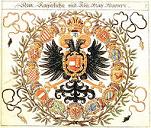
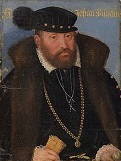


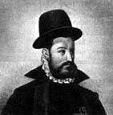
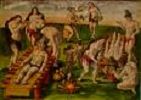
1564 On Mar. 25 the Battle of Angol near Los Infantes, Chile is a V for 60 Spaniards with 12 arqubusiers and a field gun and 500 Indian auxiliaries under Lorenzo Bernal del Mercado over 4K Mapuches under chief (toqui) Illangulien (Illangulién), who lose 1K KIA. On Apr. 11 England and France sign the Trojan Horse Second Treaty (Peace) of Troyes (first in 1420), ending English involvement in the First War of Religion (begun 1562) and renouncing English claims to Le Havre for 120K gold crowns, placing Calais beyond hopes of English recovery. On Apr. 18 after elector Augustus I of Saxony invades Gotha, the pop. fails to resist, and a mutiny gives up the town, pesky gen. Wilhelm von Brumbach (b. 1503) is tortured and executed; meanwhile pesky duke John Frederick II (1529-95) is captured, and spends the rest of his life as an imperial prisoner, and in Nov. 1566 his younger brother Johann Wilhelm (1530-73) becomes sole ruler of the duchy of Saxony (until 1572), and duke of Saxe-Weimar in 1572 (until Mar. 2, 1573); too bad, he allies himself with Charles IX of France against the Huguenots, pissing-off the HRE, whose Hapsburg family are hereditary enemies of the French kings. On May 27 John Calvin (b. 1509) dies in Geneva of TB, and Theodore Beza becomes Protestant leader in Geneva, concentrating on higher ed. of a new crop of Protestants - his dreams fulfilled? In June Philip II of Spain sends Don Diego de Guzman de Silva as his new ambassador to England to replace the Bishop de Quadra, who died last Aug. of the plague. On July 25 HRE (since 1558) Ferdinand I (b. 1503) dies, and his eldest son (king of Bohemia since May 14, 1562, king of Germany since Nov. 24, 1562, and King of Hungary-Croatia since Sept. 8, 1563) Maximilian II (1527-76) becomes HRE (until Oct. 12, 1576). On July 31 New Spain viceroy (since 1550) Luis de Velasco (b. 1511) dies after going into debt to help the poor Indians, and on Oct. 16, 1566 Gaston Carrillo de Peralta y Bosquette, 3rd Marquis of Falces (1510-87) succeeds him (until Mar. 10, 1568), and immediately deals with a revolt of the Spanish nobles by Hernan Cortes' sons Luis and Martin, sending them back to Spain, his leniency toward the rebels getting him recalled, put on trial, and acquitted. In Aug. Elizabeth I makes a progress, staying in Cambridge on Aug. 5-10, where her subjects extol her virginity - she's now the Virgin Mary and Vicar and Bride of Christ, what next, Immaculate Conception? On Nov. 21 the Spanish leave Mexico for the Philippines in hopes of finding a return route (ends 1565). On Dec. 25 the first Scottish Psalter is pub. in Edinburgh, and the Gen. Assembly of the Church of Scotland ordains its use throughout the church. Transylvania under John II adopts Calvinism as its state religion; meanwhile the polish-sausage-frying Counter Reformation begins in Poland - what's that smell? The French royal council under the influence of Michel de l'Hopital refuses to authorize the pub. of the anti-Protestant acts of the Council of Trent, claiming inconsistency with Gallican liberties; meanwhile l'Hopital accompanies teenie king Charles IX on a tour of France (ends 1566). Elizabeth I offers her favorite pretty boy Robert Dudley's hand to Mary, Queen of Scots, and creates him Earl of Leicester for the purpose; by this year (age 31) Elizabeth has lost most of her hair. The Medicis crawl back into nearly deserted Florence. Sir John Hawkins partners with Elizabeth I, leasing the old 700-ton Jesus of Lubeck and sailing with three small ships with his 2nd cousin Francis Drake to the W African coast, returning to Borburata on the Venezuelan coast with 400 slaves. Ivan IV is forced in his power struggle with the boyars to abandon Moscow for Alexandrovsk, returning only after being granted a rich boyar territory called the oprichnina, in which he begins exterminating the boyars to get even for his wife Anastasia. The Co. of English Merchant Adventurers in London (founded in 1551) is granted a new royal charter. Jacques Le Moyne de Morgues (1533-88) of France, who accompanied Rene Laudonnier in 1562 leads an expedition to the N lake region of Fla., maps the coast and visits the half-naked herb tea-drinking gator-eating Timucua Indian confederation, making art and drawings, which are pub. in 1591; next year the Spanish attack and drive the Frogs away; the Timucuas are eventually converted to Christianity, but disease and extermination raids make them extinct by 1819. Queen Regent Catherine de' Medici begins a 2-year royal progress through France with her 2nd son Charles IX and the royal family and a royal entourage of 800, visiting Nostradamus in Salon, and giving him the title of Physician in Ordinary along with 300 gold crowns, a salary and fringe benefits; he tries to examine the moles of 11-y.-o. Henry of Navarre (3rd in line for the throne), who is shy and runs away, prompting to sneak up on him while asleep, examine him, and declare that one day he will be king of France (Henri IV). Elizabeth I is so irked by the relaxed dress of Puritan clergymen that she orders the Archbishop of Canterbury to hold them to a dress code, but the Puritans, fearing a return to the vestments of Roman Catholic priests refuse to obey. The horse-drawn coach (carriage) is introduced in England from Holland. The Borrowdale Mines in Cumberland, England begin producing plumbago, used for leads in the best pencils; they are exhausted by 1850. Guy de la Fontaine attempts to corner the mummy market in Alexandria, Egypt and discovers that merchants had been selling phony mummies made from recently deceased derelicts. Catherine de' Medici first claims to see the Little Red Man, a ghost that haunts the Louvre and Tuilieries in Paris, and later becomes known as a harbinger of tragedy in France, allegedly appearing to Henri IV in 1610, Louis XVI in 1792, Marie Antoinette and Louis XVI in 1793, and Napoleon in 1798 (making a 10-year bargain with him) and 1814 (to collect). Architecture: Chinese City (Nan Cheng) in Peking (begun 1553) is completed. Lima Cathedral (begun 1535) is finished. Nonfiction: Bartolommeo Eustachio (1500-74), Opuscula Anatomica. Music: Pope Pius IV appoints a committee of cardinals to rid Church music of polyphonic harmony, which had grown unnecessarily complex, but the lovers of the polyphonic style put up noted composer Giovanni Pierluigi da Palestrina (1525-94) to do their talking for them, and he submits three masses, incl. Missa Papae Marcelli (his masterpiece), which show how to do Medieval church modes right, and wins the pope over, causing him to be appointed composer to the papal chapel, and begin a glorious career as the king of Roman Catholic polyphonic music. Art: Pieter Brueghel the Elder (1525-69), Christ Carrying the Cross. Philibert Delorme (1514-70) begins work on the Tuileries in Paris - what is the color of innocence, bravado, passion, defiance? Michelangelo sculpts the thin-limbed Rondanini Pieta, which is considered his best work by many modern sculptors (Henry Moore et al.) - thin is already in? Jacopo Tintoretto begins his paintings for the Scuola di San Rocco (finished 1587). Births: English "Dido, Queen of Carthage" , "The Jew of Malta" playwright-poet-spy (gay?) Christopher "Kit" Marlowe (Marley) (d. 1593) on Feb. 23 in Canterbury, Kent; son of a cobbler; educated at the King's School, and Corpus Christi College, Cambridge U. Italian scientist ("Father of Observational Astronomy") ("Father of Science") ("Father of Modern Physics") Galileo Galilei (d. 1642) on Feb. 15 [Aquarius] in Pisa, Tuscany (home of the Leaning Tower); son of Vicenzo Galilei (1520-91). English #1 Elizabethan/Jacobean poet-playwright ("the Bard of Avon") William "Will" Shakespeare (d. 1616) (anagram for "We all make his praise", "I am a weakish speller") on Apr. 23 (May 3 Gregorian) (Sun.) (St. George's day) [Taurus] in a half-timber Tudor house in Stratford-upon-Avon (Stratford-on-Avon) (100 mi. N of London), Warwickshire (2nd w not pronounced); baptized on Apr. 26; eldest of six children (3rd eldest of eight, of whom the first two died before him) incl. Joan (1558), Margaret (1562-3), Gilbert (1566-1612), Joan II (1569-1646), Anne (1571-79), Richard (1574-1613), and Edmund (1580-1607); father John Shakespeare (1531-1601) from Snitterfield is a glove maker and leather merchant, and works for the town council tasting locally-produced beer and acts as bailiff (sheriff); mother Mary Arden (1537-1608) (married in 1557) is from a wealthy local family; Will's father John is plagued with accusations of illegal moneylending and wool dealing by professional informers starting in 1569, and is in financial and legal trouble until 1583, shaping Will's attitude to power and morality as seen in "King Lear" and "Macbeth"?; in the summer the plague kills 200+ of his neighbors; attends King Edward VI Grammar School, whose teachers come from Oxford U.; coiner of the words "hurry", "assassination", "bump", and "fancy-free", and the phrases "all that glitters is not gold", "all's well that ends well", "bated breath", "dead as a doornail", "fool's paradise", "good riddance", "heart of gold", "in a pickle", "laughing stock", "laugh it off", "love is blind", "naked truth", "neither rhyme nor reason", "one fell swoop", "pomp and circumstance", "pound of flesh", "star-crossed lovers", "too much of a good thing", "wear my heart upon my sleeve", "wild goose chase", "the world's my oyster" et al. - is the Shakespeare Code a conspearacy? English aristocrat ("the Wizard Earl") Henry Percy, 9th Earl of Northumberland (1564-1632) on Apr. 27 in Tynemouth Castle, Northumberland; son of Henry Percy, 8th earl of Northumberland (1532-85); father of Algernon Percy, 10th earl of Northumberland (1602-68); a pseudo-Protestant in a Roman Catholic family; known for his great wealth, learning, and scientific-alchemical experiments, along with mild deafness and speech impediment. German duke (1572-96) John Casimir of Saxe-Coburg (d. 1633) on June 12 in Gotha; youngest of three sons of Duke John Frederick II of Saxony and Countess Palatine Elisabeth of Simmern-Sponheim. English navigator William Adams (Miura Anjin) (d. 1620) on Sept. 24 in Gillingham, Kent. English peer Henry Brooke, 11th Baron Cobham (d. 1618) on Nov. 22; son of William Brooke, 10th baron Cobham and 2nd wife Frances (daughter of Sir John Newton); educated at King's College, Cambridge U. German "De Synagoga Judaica" Hebrew scholar ("Master of the Rabbis") Johannes Buxtorf (d. 1629) on Dec. 25 in Kamen (Bockstrop), Westphalia; prof. of Hebrew at the U. of Basel; father of Johannes Buxtorf the Younger (1599-1664). English politician-diplomat Sir Henry Neville (d. 1615); son of Sir Henry Neville (-1593) and 2nd wife Elizabeth Gresham (-1573), granddaughter of Sir Richard Gresham, lord mayor of London; distant relative by marriage of William Shakespeare's mother; educated at Merton College, Oxford U.; the real Shakespeare? English adventurer Sir Thomas Shirley Jr. (d. 1620) in Wiston, Sussex; eldest son of Sir Thomas Shirley Sr. (1542-1612); brother of Sir Anthony Shirley (1565-1635) and Sir Robert Shirley (1581-1628); father of dramatist John Shirley (1596-1666). Indian Muslim Sufi scholar ("Reviver of the Second Millennium") Shaykh Ahmad al-Furuqi al-Sirhindi (d. 1624) in Punjab. Italian Baroque composer and Franciscan friar Lodovico Grossi da Viadana (Grossi) (d. 1627) in Viadana (near Parma). Flemish (Dutch) painter Pieter "Hell" Brueghel the Younger (d. 1638) in May 23-Oct. 10 in Brussels; eldest son of Pieter "Peasant" Brueghel (Breughel) the Elder (1522-69); his studio cranks out copy of his father's work, spreading them throughout Europe; nicknamed for painting depictions of Hell, although his brother Jan Brueghel the Elder really did it? English scholar Henry Spelman (d. 1641) in Congham, Norfolk; educated at Trinity College, Cambridge U.; father of Sir John Spelman (1594-1643). English Anglican bishop Thomas Morton (d. 1659) in York; educated at St. John's College, Cambridge U. Deaths: Italian superstar artist Michelangelo (b. 1475) on Feb. 18; leaves 435-ft.-tall St. Peter's Basilica unfinished, reaching the lower part of the dome, and another architect is assigned to finish it: "Trifles make perfection and perfection is no trifle." French poet Maurice Sceve (b. 1501) in Lyon? French anatomist Charles Estienne (b. 1503). Spanish HRE (1556-64) Ferdinand I (b. 1503) on July 25 in Prague, Bohemia. French-born Swiss Protestant leader (Presbyterian Church founder) John Calvin (b. 1509) on May 27 in Geneva (TB); buried in the gen. cemetery of Plain-Palais. Dutch anatomist (founder of anatomy) Andreas Vesalius (b. 1514) on Oct. 15 on Zakynthos Island, Greece; after being persecuted as a graverobber, sorcerer et al., he dies in poverty in a shipwreck while returning from the Holy Land. French naturalist Pierre Belon (b. 1517) in Apr. in Bois de Boulogne, Paris (assassinated).






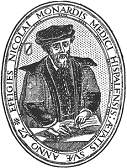

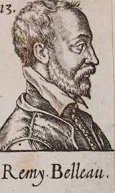

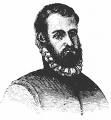

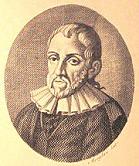
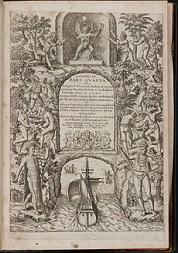

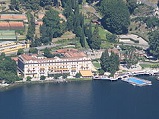
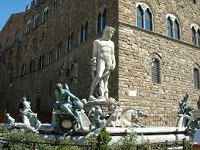
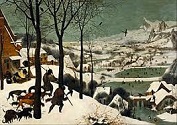
1565 On Jan. 26 the Hindu Vijayanagra Empire suffers a disastrous defeat by invaders from the Muslim sultanates of the Deccan to the N at the Battle of Talikota, and the royal capital of Vijayanagra is destroyed, greatly weakening the empire. On Feb. 13 Spanish conquistador Miguel Lopez de Legazpi (1502-72) and his navigator (Augustinian friar) Andres de Urdaneta (1498-1568) arrive from Acapulco, New Spain (Mexico) in the Philippines, and on June 24, 1571 after conquistador Miguel Lopez de Legazpi conquers it from the Muslims found the city of Manila on Manila Bay in the South China Sea (modern-day pop. 1.8M/12.8M); in July they and found the city of Manila on Manila Bay in the South China Sea (modern-day pop. 1.8M/12.8M); in July they discover a good route back to Acapulco, which becomes known as Urdaneta's Route, and Legazpi returns as royal gov. of the Philippines to establish the "China route" through the "Spice Islands"; Augustinian friars follow and become a force in the islands, later joined by other orders, incl. Franciscans, Jesuits, Dominicans, and Recollects; tequila (distilled agave nectar) begins to be exported from Mexico via the Camino Real through the Sierra Madre Mts.; galleons are built in Barra de Navidad for the route from Veracruz to Spain. In Feb. after the Old English (descendants of those who moved to Ireland in the 12th-13th cents.) families Butler of Ormonde and Fitzgerald of Desmond in Munster in S Ireland almost end their 13th cent. feud with the "Battle That Never Was" in 1560, when the widowed Countess of Ormonde marries the Earl of Desmond, only to die in 1564, leaving her Protestant pro-Elizabeth I son Thomas Butler, 10th Earl of Ormonde (1531-1614) and his Roman Catholic hereditary enemy Gerald Fitzgerald (FitzGerald), 15th Earl of Desmond (1533-83) (head of the Geraldines) to go back to their billy goat ways, they escalate it to all-out war and fight the private Battle of Affane in County Waterford in Munster in SE Ireland, one of the last private battles in the British Isles, which is a V for the Butlers but leads to the Desmond Rebellions in 1569-73 and 1579-83 in Munster; the feud doesn't end until 1629. On Mar. 1 the city of Rio de Janeiro ("January River") (Sao Sebastiao do Rio de Janeiro) (modern-day pop. 6.4M/12.3M) in Brazil is founded, becoming a favorite target for French buccaneers and pirates; on Jan. 27, 1763 the colonial admin. of Portuguese Am. is moved there from Salvador, after which in 1808 the Portuguese royal family and nobles flee Napoleon's invasion of Portugal there. On May 18-Sept. 11 the Great Siege of Malta sees the Ottoman Muslims unsuccessfully try to take Malta from the Hospitallers (Order of St. John) under grandmaster (since 1557) Jean Parison de la Valette (1494-1568); the Battle of Malta (the last battle of the Crusades?) ends cross-slappin' happily for the Crusaders with the arrival of Spanish troops, forcing the Turks to abandon their seige after losing 25K-35K, vs. 2.5K troops, 500 slaves, and 7K civilians for the Christians, after which the siege becomes one of the most celebrated events of the cent. in Christendom, ending the aura of Ottoman invincibility and beginning the era of Spanish domination of the Mediterranean; Ottoman Gen. Dragut is KIA by cannon fire from Ft. St. Elmo in Il-Qortin (modern-day Sliema); French biographer Seigneur de Brantome, Seigneur de Bourdeille joins the expedition sent to Malta to assist the Knights of St. John, and later goes to Italy, Africa, and Hungary to gain mucho material for his cool memoirs; the 9/11 attack is meant to get even for this D along with the one in Vienna in 1683? On July 29 after Elizabeth I sends Sir Nicholas Throckmorton in vain in May to try to prevent it, Queen Mary Stuart of Scotland marries her 2nd hubby, handsome Catholic 2nd cousin Henry Stuart, Lord Darnley, Duke of Albany (1545-67), whom she had just met on Feb. 14 after Elizabeth I pitched him at her in a plot to get her to fall for him then forbid her from marrying an English subject, but falls in love with and refuses to send back (ah, the wrong night?); she holds the ceremony at Holyrood at 6 a.m. to prevent rioting over the Catholic rites; on June 30 she declares the arrogant prick king of Scotland to stony silence without approval by anybody, and is forced to quiet near revolts by Protestants who hoped she'd marry one of theirs; the "crown matrimonial" is not hers to give anyway; meanwhile James Stuart, earl of Moray (Murray) flip-flops, going back to supporting John Knox (1505-72), and on Aug. 26 stages the unsuccessful Chaseabout Raid against Mary with other Protestants, which Knox sits out, withdrawing to Kyle in Ayrshire in 1566; Mary takes personal control, and recalls the earl of Bothwell from exile in France to suppress Murray's revolt, getting him chased to England; Mary becomes preggers in the fall, and jealous prick Darnley targets Mary's Italian secy. David Rizzio (Riccio) (1533-66), while treasonably plotting with sympathetic nobles to gain the crown matrimonal and put himself in charge. On Aug. 28 after Florida (Fla.) is settled by French Huguenots, troops sent by Spanish King Philip II, led by adelantado adm. Pedro Menendez de Aviles (Menéndez de Avilés) (1519-74) found the Spanish city of St. Augustine (San Augustin) (modern-day pop. 14K), with the parish church run by Padre Lopez, and build the massive coastal fort Castillo de San Marcos, designed by Ignacio Daza; on Sept. 20 they capture Huguenot-held Ft. Caroline, and in Oct. wipe out a Huguenot relief force under Jean Ribault in the Mantanzas Inlet, hanging their bodies with the legend "Not as Frenchmen but Lutherans"; the Spanish go on to build presidios and posts across the area and support the establishment of missions by Jesuits and Franciscans as far N as Va. On Dec. 9 Pope (since 1559) Pius IV (b. 1499) dies. In Dec. winter in N Europe is super-cold, killing birds and fruit trees; on Dec. 25-Jan. 13 the Thames River freezes solid, and Elizabeth I becomes fond of daily trips on the ice. HRE Sigismund II introduces the Jesuits into Poland-Lithuania to stop the pesky Protestants, Calvinists, and Anti-Trinitarian Arians. Ivan IV the Terrible creates the Oprichnina, an order of black-cowled oprichniks (the original Dark Riders?), who instill terror throughout Russia. Veera Kerala Varma dies, and Keshava Rama of Varna (-1601) becomes ruler of little, out-of-the-way Cochin. Torquato Tasso (1544-95) becomes court poet at Ferrara. The Royal Exchange of London is founded by Sir Thomas Gresham (1519-79) as the commercial center of London, and officially opened by Elizabeth I on Jan. 23, 1571; his family symbol of a grasshopper is used in its weathervane. The 300-ton Spanish Basque galleon San Juan sinks in Red Bay, Canada; it is recovered in 1978. Dutch painter Arnold Bronckhorst (Bronckorst) begins his career in Scotland, becoming James VI's court painter (until 1583), painting him as a cute little boy in 1574 et al. Women first perform as actresses in Italy. A paper mill is founded in Moscow. Italian missionary in Japan Father Louis Almeida writes a letter containing the first news of Japanese tea in Italy, with the soundbyte: "The Japanese are very fond of an herb agreeable to the taste, which they call chia." Architecture: The 4.2m-tall Fountain of Neptune in Florence, Italy, designed by Baccio Bandinelli after being commissioned in 1559 by Cosimo I de' Medici is finished in time for the wedding of Francesco de' Medici to Grand Duchess Johanna of Austria; too bad, the local pop. thinks that it stinks, and nickname it "Il Biancone" (the White Giant); a fountain is completed by 1575; on Aug. 4, 2005 three vandals cut of one of Neptune's hands holding a trident; it is restored in 2007. The Renaissance Villa d'Este (originally Villa del Garovo) in Cernobbio on the shores of Lake Como in N Italy is begun (finished in 1570) by Milan-born Bolognese architect Pellegrino Tibaldi (Pellegrino di Tibaldo de Pellegrini) (1527-96) as a residence for Cardinal Tolomeo Gallio, complete with a Renaissance garden, becoming a luxury resort for the elite; in 1749-69 it is used by the Jesuits for spiritual exercises; in 1815 it is acquired by Caroline of Brunswick after leaving her hubby future George IV, who relandscapes the 25-acre park in the English style; in 1873 it becomes a luxury hotel; in 1848 wealthy silk manufacturer Carlo Sacchi was murdered by his lover Countess Pia Bellentani during a gala dinner using his Fegyverzyar automatic pistol. Science: The Royal College of Physicians in London is empowered to carry out human dissections. The first known drawings of fossils are pub. by Swiss naturalist Conrad Gessner (Konrad von Gesner) (1516-65); meanwhile after graphite was discovered last year in Cumberland, the first Graphite (Plumbago) Pencils (invented by von Gesner) begin to be manufactured in England from graphite mined in Borrowdale in the Lake District of N England, the purity being so high that it corners the Euro market. In this decade the fictitious island of Friesland (Frisland) (Frischlant) (Frisianda) (Frislandia) (Fixland) (Fer Island) (Fair Isle) off the S coast of Greenland begins appearing on maps, not being discovered to not exist until the mid-18th cent. Nonfiction: Jacobus Anconcio, Stratagemata Satanae; advocates religious toleration? St. Teresa of Avila (1515-82), The Way of Perfection. Girolamo Benzoni (1519-?), History of the New World (Historia del Mondo Nuovo) (Venice); dedicated to Pope Pius IV; written after a stay of 15 years, bristling with hatred for the Spanish and full of errors, but important for the controversy over the treatment of Native Ams.; French trans. pub. in 1579; German trans. pub. in 1579; English trans. by William Henry Smyth pub. in 1857. Theodore Beza (1519-1605), Parallel New Testament; his own trans. (1556), the Greek text, and the Latin Vulgate; 2nd ed. 1582. Thomas Cooper (1517-94), Thesaurus Linguae Romanae et Britannicae (Cooper's Dictionary); big hit, praised by Elizabeth I, followed by 3 more eds., used by William Shakespeare, getting him elected bishop of Loncoln on Feb. 4, 1571, and translated to Winchester on Mar. 12, 1584. Nicolas Monardes (1493-1588) Historia medicinal de las cosas que se traen de nuestras Indias Occidentales (Medical study of the products imported from our West Indian possessions) (2 vols.); 2nd ed. 1569; 3rd ed. 1574; first description of "el tobaco" and other Am. plants, praising tobacco smoke as a panacea. Pierre de la Place, Histore de Nostre Temps. Charles Stephens, Dictionarium Historico-Geographicum; the first modern European geographical dictionary, chock full of serious errors. Bernardino Telesio (1508-88), De Rerum Natura Luxta Propria Principia (On the Nature of Things According to Their Own Principles); bases his theory on not matter and form but matter and force, the latter consisting of heat (which expands) and cold (which contracts); too bad, his attacks on Aristotelianism piss-off the Church, and his books are banned for awhile after his death. Art: Giovanni da Balogna, Samson. Pieter Brueghel the Elder (1525-69), A Country Wedding; The Corn Harvest; The Hunters in the Snow (Return of the Hunters); stark portrayal of global cooling? Tintoretto (1518-94), Flight into Egypt. Poetry: Remy Belleau (1528-77), La Bergerie (1565-72); a mixed verse-prose work modeled on Jacopo Sannazaro's "Arcadia" (1544). Thomas Craig (1538-1608), Epithalamium; in honor of the marriage of Mary, Queen of Scots and Lord Darnley. Pierre de Ronsard (1524-85), Elegies. Giambattista Cinzio Giraldi, Ecatommiti; collection of moral and love stories. Arthur Golding (tr.), Metamorphoses, Books 1-4. Births: English celeb Elizabeth "Bess" Raleigh (nee Throckmorton) (d. 1647) on Apr. 16; daughter of Sir Nicholas Throckmorton (1515-71); wife (1591-) of Sir Walter Raleigh (1554-1618); mother of Damerei Raleigh. Italian poet-writer Alessandro Tassoni (d. 1635) on Sept. 28 in Modena. Italian scientist (archenemy of Galileo) Lodovico delle Colombe (d. 1616) in Florence. English miniature portraitist (Huguenot) Isaac Oliver (d. 1617) in Rouen, France; emigrates to England in 1568. Anglo-Welsh poet Sir John Davies of Hereford (d. 1618); not to be confised with Sir John Davies (1569-1626). French Jesuit missionary (to Am.) Pierre Biard (d. 1622) in Grenoble. Georgian queen (Christian) (St.) Ketevan the Martyr (d. 1624); daughter of Prince Ashotan of Mukhrani (Bagrationi); wife of David I of Kakheti. English adventurer Sir Anthony Shirley (Sherley) (d. 1635) in Wiston, Sussex; 2nd son of Sir Thomas Shirley Sr. (1542-1612); brother of Sir Thomas Shirley Jr. (1564-1620) and Sir Robert Shirley (1581-1628); educated at Oxford U. French feminist writer Marie de Gournay (d. 1645). Am. Narragansett Indian chief (during the 1620 Mayflower landing) Canonicus (d. 1647). Deaths: Ottoman Greek adm. Dragut Reis (b. 1485) on June 23 in Malta (KIa). French Protestant reformer William Farel (b. 1489). French bibliophile Jean Grolier de Servieres (b. 1489) on Oct. 22 in Paris. German-Danish Protestant gen.-statesman Johan Rantzau (b. 1492) on Dec. 12. Italian Pope (1559-65) Pius IV (b. 1499) on Dec. 9. Spanish conquistador Francisco de Montejo, El Mozo (b. 1502) on Feb. 8 in Merida. German-Swiss naturalist Konrad von Gesner (b. 1516). Dutch composer Cyprien de Rore (b. 1516). French navigator Jean Ribault (b. 1520) on Oct. 12 in St. Augustine, Fla. Italian mathematician Ferrari (b. 1522). Italian cardinal Ranuccio Farnese (b. 1530) on Oct. 29.

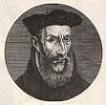
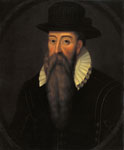









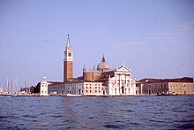
1566 On Jan. 7 Milan-born Dominican grand inquisitor (cardinal since 1557) Antonio Michele (Michaele) Ghisleri (Ghislieri) is elected Pope (#225) (St.) Pius V (1504-72) (until May 1, 1572) immediately showing his blood-red saintly colors by opposing all religious tolerance, enforcing the decrees of the Council of Trent, aiding French Huguenot persecution, and expelling Jews from the Papal States, mobilizing all his resources to punish those pesky heretics who don't recognize him as the one and only maximum bridgemaker to God? On Mar. 9 David Riccio (Rizzio) (b. 1533) is murdered by Lord Darney, Lord Ruthven, Lord Lindsay, Mary's Protestant stepbrother John Erskine, 1st Earl of Mar (-1572) et al. in Holyrood Palace in front of pregnant Mary, Queen of Scots, almost causing her to miscarry and turning her against Darnley, starting by pardoning the lords involved in the Chaseabout Raid who were not involved in Riccio's murder; on June 19 she bears Prince James (future James VI) in Edinburgh Castle, giving Scotland a male heir, weakening her grip on the throne rather than strengthening it (the Stewart disease?); too bad, for safety she sends the infant to Stirling Castle in the care of the Earl and Countess of Mar, where he is baptized a Roman Catholic in Dec. in a magnificent rite; a blood stain on the wooden floor left by dying Rizzio remains to modern times. On Mar. 28 Hospitaller grandmaster Jean Parisot de la Valette founds the city of Valletta (modern-day pop. 6.4K) in Malta on the slopes of Mount Sciberras near Ft. St. Elmo, which held out to the Turks for 30 days; the city goes on to become known as "Superbissima" (Most Proud) as it holds out against pesky Muslims. In Apr. the Ottoman navy captures Chios from the Genoese. In May despite the 1562 truce, Ottoman sultan (since Sept. 30, 1520) Suleiman (Suleyman) I the Magnificent (b. 1494) leaves Constantinople with 100K-300K troops in his last Hungarian campaign against the Hapsburgs, with the goal of capturing Vienna; on Aug. 6-Sept. 8 the Battle of Szigetvar (Szigeth) in Croatia near the Hungarian border sees 2.3-3K Croatians under Nikola Subic Zrinski (1508-66) defend their fort to the last man after killing 20K Ottomans, holding back the Ottoman attack on Vienna, causing Cardinal Richelieu to later call it "the battle that saved civilization"; after capturing the strategic fort of Gyula (until 1694), Suleiman I falls ill and dies on Sept. 5/6/7, and is succeeded as Ottoman sultan #11 (until 1574) by his blonde-haired sauce-loving only surviving son Selim II (the Yellow) (the Sot) (1524-74), who takes the title of "Universal Lord of Everything Under the Sun, Descendant from Divine Lineage, Destroyer of the Christian Faith, Dominator of the Universe", then retires to his harem, leaving affairs of state to his Bosnian grand vizier Pasha Mehmet Sokullu (Sokollu) (1506-79), causing his princes to do the same, setting a bad example for the future as palace hos find a chance to rule behind the sultan's skirts, er, whatever they wear?; Jewish financier Don Joseph Nasi becomes the sultan's diplomatic rep. and is appointed duke of Naxos; he and his aunt Dona Gracia Mendes finance the rebuilding of Tiberias in Palestine as a center for Jewish learning, unsuccessfully trying to resettle Jews there; Suleimen's internal organs are buried in a shrine on the top of a hill near Szigetvar, which is destroyed in 1692 by the Hapsburgs, after which they are moved to the Szuz Maria Church 3km NE of the fortress. The closest thing Roman Catholicism has produced to an uncrowned pope sets up permanent shop in Salon? On June 17 after contracting dropsy, Nostradamus (b. 1503) writes his will, then dies on July 1 after being given the last rites by a local French priest; he is buried upright in a wall of the Church of the Cordeliers at Salon, and leaves his wife Anne 3,444 crowns; his grave is opened by superstitious soldiers during the French Rev., then reburied at the Church of St. Laurent in Salon. On Aug. 1 Catherine de' Medici finally leaves off mourning for her dead hubby Henri II seven years after his death; meanwhile her man Michel de l'Hopital gets an edict promulgated reforming abuses in the admin. of justice in France. In summer the Beeldenstorm (Ger. "iconoclastic outbreak"), a wave of image-breaking begins, spreading through the Low Countries, with Calvinists destroying statues of Catholic saints in hundreds of churches and monasteries, which causes Netherlands gov. Margaret of Parma to promise to give Dutch noblemen more power and abolish the Inquisition, only to be countermanded by her brother Philip II. Sir Hugh O'Donnell (-1600) becomes king of Tyrconnell in Ulster, Ireland, seeing his sons stage a violent succession dispute in the 1580s until he abdicates in 1592 in favor of son "Red" Hugh Roe O'Donnell. Emperor (since 1521) Ming Shi Zong (Jiajing) (b. 1506) dies, and Ming Mu Zong (Mu Tsung) (-1573) becomes Ming emperor #12 of China (until 1573). Italian Latin and Greek prof. Antonius Palearius is burned in Rome as "Inquisitionis Detractator" for calling the Inquisition a dagger pointed at the throats of lit. men; proof of his heresy is that he signs his name as Aonius, proving he hates the sign of the cross? Barom Reachea I (d. 1576) becomes king of Khmer (Cambodia). Heinrich Bullinger unites Calvinism and Zwinglianism in the Second Helvetian Confession - a lot of it is a blur but I'll try to remember? Duke Albrecht I of Prussia, who since the 1552 death of his mentor Andreas Osiander has increasingly become an old fart under the control of Osiander's son-in-law, German Lutheran preacher Johann Funck (Funk) (Funccius) (1518-66) and Croatian adventurer and self-proclaimed know-it-all encyclopedic Croatian writer Stanislav Pavao (Paul) Skalic (1534-73) (who both used him to get rich), is finally reined-in by the estates, who get his cousin Sigismund II Augustus of Poland to send a commission to Konigsberg, which on Oct. 28 has Funck executed and Scalic condemned, saving himself by fleeing; Albrecht's only son Albrecht Frederick (b. 1553) is confirmed as his heir, with a regent appointed, Lutheranism is confirmed as Prussia's state church, and the old fart lives two more years stripped of power, living with his 2nd wife Anna Maria, daughter of Duke Eric I of Brunswick-Luneburg. Volcanic 18,700-ft. Pico de Orizaba (Citlaltepetl) in S Mexico between Mexico City and Veracruz (highest peak in Mexico and 3rd highest in North Am. after Mount McKinley and Mount Logan) erupts. 20-y.-o. Father of the Nerds, Danish astronomer Tycho Brahe (1546-1601) (pr. TOO-koh BRA-huh) loses part of his nose in a duel in Wittenberg at the U. of Rostock with fellow student Manderup Parsbjerg over a math equation, and gets a metal (gold-silver) replacement - the first German bra? The first newspapers take the form of Avvisi (It. "advice", "announcement"), weekly handwritten news sheets folded to form four pages circulated in Venice, Italy, filled with news of politics and war; the first printed newspapers appear in Germany in 1605. Architecture: Andrea Palladio begins the Church of San Giorgio Maggiore in Venice (finished in 1610), known for its brilliant white marble which gleams above the blue water of the lagoon opposite the Piazzette, forming the focal point of every view from the Riva degli Schiavoni. Nonfiction: Jean Bodin (1530-96), Methodus ad Facilem Historiarum Cognitionem (Method for the Easy Knowledge of History); rejects Franciscus Patricius, emphasizing the role of knowledge of politics and legal systems in interpreting historical writings, also social life, rejecting the pagan Golden Age and Biblical Four Kingdoms of Daniel models of history; "Of history, that is, the true narration of things, there are three kinds: human, natural, and divine." Diego de Landa (1524-79), Relacion de las Cosas de Yucatan; catalogs the Mayan language, religion, culture and writing system, ordering two Mayans to write down the symbols for each letter in the Spanish alphabet, not realizing that the Mayan script is syllabic, and therefore produces duplications and inconsistencies; funny justice, it's by the same guy who orders all Mayan writings burned, and in 1952 Russian linguist Yuri Valentinovich Knorosov (Knorozov) (1922-99) uses his work to crack Mayan writing, although only an abridged vers. survived, discovered in 1862 by French cleric Abbe Charles Etienne Brasseur de Bourbourg (1814-74), and pub. in 1864. St. Teresa of Avila (1515-82), Autobiography. Plays: George Gascoigne (1539-78), The Supposes; based on Lodovico Ariosto's "Gli Suppositi"; the first English prose comedy?; source of William Shakespeare's "Taming of the Shrew"? - I promise to keep doing this if you'll keep laughing? Art: Giuseppe Archimboldo (1527-93), The Librarian. Titian (1477-1576), Self-Portrait (1560?). Novels: William Adlington (tr.), Apuleus Golden Ass. Willliam Painter (1540-95), The Palace of Pleasure Beautified (2 vols.) (1566-67) (combined ed. 1575); a tr. of a collection of 94 Italian novellas, allegedly used by Shakespeare as a source of several plots. Births: French nun Barbe Jeanne Acarie (Madame Marie of the Incarnation) (Barbara Avrillot) (d. 1618) on Feb. 1 in Paris; founder of the Discalced Order of Carmelite Nuns; feast day: Apr. 18. Italian shockingly intense madrigal composer-murderer Carlo Gesualdo da Venosa, Prince of Venosa and Count of Conza (d. 1613) on Mar. 30 in Venosa. Ottoman fratricidal sultan #13 (1595-1603) Mehmed III Adli (d. 1603) on May 26 in Manisa; son of Murad III (1546-95); father of Ahmed I (1590-1617). English king (1603-25) and Scottish Stewart king (1567-1625) (Freemason) James I of England (James VI of Scotland) (d. 1625) on June 19 in Edinburgh Castle; only son of Mary Stuart (Stewart), Queen of Scots (1542-87) and Henry Stewart, Lord Darnley (1545-67). Polish king (1587-1632) and Swedish king (1592-9) Sigismund (Zygmunt) III Vasa (Wasa) (d. 1632) on June 20 in Gripsholm Castle, Sweden; son of John III of Sweden and his 1st wife Catherine Jagellonica of Poland; Swedish nephew of Sigismund II (son of King John). English #1 Elizabethan actor Edward Alleyn (d. 1626) on Sept. 1 in Bishopsgate, London; being tall helps. English soldier-courtier Robert Devereux, 2nd Earl of Essex (d. 1601) on Nov. 10 in Netherwood, Cumbria; son of Walter Devereux, 1st earl of Essex (1539-76) and Lettice Knollys (1540-1634); favorite of Elizabeth I, and stepson of her lover Robert Dudley, earl of Leicester, who marries Lettice in 1578. English explorer Henry Hudson (d. 1611). Portuguese missionary to China Jean de Rocha (d. 1623). Dalmatian archibishop-scientist Marco Antonio de Dominis (d. 1624) in Arbe Island; educated at Loreto College (Jesuit), and U. of Padua. Italian musician-priest Pietro Cerone (d. 1625) in Bergamo. English traveler Fynes Moryson (Morison) (d. 1630) in Lincolnshire; educated at Peterhouse, Cambridge U. Italian Mannerist-Baroque painter and art historian Giovanni Baglione (AKA Il Sordo del Barozzo) (d. 1643) in Rome; pupil of Francesco Morelli. English soldier-colonizer Sir Ferdinando Gorges (d. 1647) in Ashton, Somersetshire. Dutch painter-engraver Abraham Bloemaert (d. 1651) in Dordrecht; influenced by Italian rather than Dutch masters. Deaths: Spanish missionary-historian Bartolome de Las Casas (b. 1484) on July 17 in Madrid; leaves Historia General de las Indias, which isn't printed until 1875 - after there aren't any Indians left? Italian poet Marcus Hieronymus Vida (b. 1485) on Sept. 27. German diplomat-historian Sigismund von Heberstein (b. 1486) on Mar. 28. German prince Wolfgang of Anhalt-Kothen (b. 1492) on Mar. 23 in Zerbst. German Protestant preacher Johann Agricola (b. 1494) on Sept. 22 in Berlin. Ottoman sultan (1520-66) Suleiman I the Magnificent (b. 1494) on Sept. 5/6/7 in Szigetvar, Hungary (near the modern-day Hungarian-Croatian border); his tomb is discovered in 2016. French noblewoman Diane de Poitiers (b. 1499) on Apr. 25 in Anet, Eure-et-Loir; killed by drinking too much gold? Spanish composer Antonio de Cabezon (b. 1500). German botanist Leonhard Fuchs (b. 1501) on May 10 in Tubingen; the genus Fuchsia (AKA the Earring) of the evening primrose family is named for him by Linnaeus - release the hummingbirds? French profound prognosticator Nostradamus (b. 1503) on July 1. French physician and anatomist Guillaume Rondelet (b. 1507) on July 30. Croatian ban (1542-56) Nikola Subic Zrinski (b. 1508) on Sept. 7 in Szigetvar, Hungary. Italian artist Daniele Ricciarelli da Volterra (b. 1509) on Apr. 4 in Rome. German Lutheran theologian Johann Funck (b. 1518) on Oct. 28 in Kneiphof (executed). French humanist Renaissance poet Louise Labe ("La Belle Cordiere") (b. 1520). English diplomat Thomas Hoby (b. 1530) on July 13. Italian secy. David Riccio (b. 1533) on Mar. 9 in Holyrood House, Edinburgh (murdered).



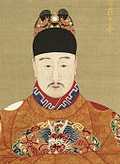


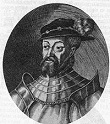
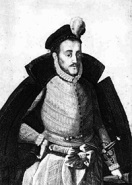
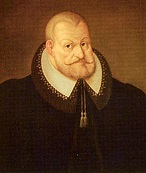
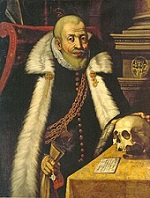


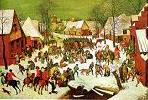
1567 By this year 2M South Am. natives die of typhoid fever - run that by me again? Be nice to Dutch Protestants, yes, and or duh, my bad? The Dutch Protestant revolt against Spain and its Roman Catholic inquisitors (ends 1648) heats up when oh-so-bloody Catholic Spanish "Iron Duke" Fernando Alvarez de Toledo y Pimentel, 3rd Duke of Alva (Alba) (1507-82) (whited sepulcher?) is dispatched from Spain with 24K soldiers (incl. 10K of Europe's best soldiers), 6K horses, and 2K hos with orders to stamp out the heretical rebels, causing Calvinists and Lutherans to flee, incl. Flemish prince William I the Silent of Orange (1533-84), who up till now had been a tolerant Catholic, HRE Charles V's favorite in his teens, who had been awarded governorship of three N Netherlands provinces, but is financially involved with several rebels; in Aug. Alva arrives, and on Sept. 9 founds the Council of Troubles (Blood Council), a kangaroo star chamber without legal status which often convicts people just for being wealthy so they can rob them, and goes on to become such a mean ass that he whips the Dutch into a full-scale war of independence after summoning 10K to the Blood Council, incl. William I the Silent, who fails to appear, is declared an outlaw and forfeited, turning him into the rebels' leader, financing the Watergeuzen (Sea Beggars) (coastal corsairs), and organizing an army of German Protestant mercenaries; meanwhile Alva arrests Flemish statesmen Count Lamoral of Egmont (1522-68) and Count Philip de Montmorency Hoorn (1518-68), condemns them and confiscates their property, becoming his biggest fish-kills; Margaret of Parma resigns her regency in his favor and returns to Italy; if you're caught with a Bible or Protestant lit. in the Low Countries your ass is grass and Alva's got the lawnmower; "Alva's six-year reign was to be an unforgettable reign of terror in which the Spanish government attemped forcibly to uproot the now firmly entrenched Protestantism of the Northern provinces" (New Catholic Encyclopedia); to help him Pope Pius V's Holy Office condemns all 3M Netherlanders to death as heretics, a decree confirmed by his boss Philip II of Spain. On Jan. 23 emperor (since May 27, 1521) Jiajing (b. 1507) dies, and on Feb. 4 his speech-impaired son Longqing ("great celebration") (Zhu Zaihou) (1537-72) (AKA the Prince of Yu) becomes Ming emperor #12 of China (until July 5, 1572). On Feb. 10 Mary, Queen of Scots' husband Darnley, who had refused to rule as consort of the Queen but wanted to rule as king is assassinated in Kirk-on-Field in Edinburgh, the house being blown up early in the morning and his body mysteriously found lying on the lawn of a nearby garden without a scratch on it, probably the work of her boyfriend James Hepburn, 4th earl of Bothwell and his agents in revenge for his killing of Riccio); Bothwell is put on trial for the murder, appears with 4K armed retainers and is quickly acquitted; on Apr. 24 he kidnaps Mary while she is returning to Edinburgh from Stirling, takes her to Dunbar, "ravishes" (with devilish charm) then marries her on May 15 in a Protestant ceremony, becoming her 3rd hubby after first divorcing his 1-year wife Jean Gordon, sister of the earl of Huntly, and being created duke of Orkney and Shetland; they enjoy a brief honeymoon at Borthwick Castle S of Edinburgh before they are separated forever, Mary climbing out a window dressed as a page boy after the pissed-off Catholic and Protestant Scottish nobles revolt, with the "King's Men" favoring young Prince James opposing the "Queen's Men" who want to keep Mary in power; on June 15 she surrenders at Carberry Hill near Musselburgh (E of Edinburgh) after Bothwell and her Queen's Men desert, and she is captured, paraded through Edinburgh in front of hostile crowds, and imprisoned at Lochleven Castle on an island in the middle of a lake in Kinross; on June 20 after Elizabeth I sends Sir Nicholas Throckmorton to Scotland with instructions to talk the barons into restoring Mary (which he personally disagrees with), Mary's Casket Letters to Bothwell are discovered by James Douglas, earl of Morton, incriminating her as an accessory to murder; on July 23 she miscarries twins while being pressured to abdicate, which she does on July 25, handing the throne over to 1-y.-o. "cradle king" James VI (1566-1625), who is crowned on July 29 at Stirling; Throckmorton pisses Elizabeth I off by revealing her instructions to the Scottish barons and is recalled in Aug.; Bothwell escapes to Orkney and Shetland, becomes a pirate leader, dodges the English, and reaches Norway, then ends up in Copenhagen, where he promises the Danes to restore the Orkneys and Shetlands to them for good treatment; only seven lords show up at James VI's coronation on July 29 (worst attendance at a Scottish coronation), where John Knox gives a sermon certifying the Scottish Protestant Kirk as PC in Scotland, which ends up being governed by a succession of regents during the king's minority, beginning with his half-uncle James Stewart, earl of Moray (until 1570); the earl and countess of Mar raise the king tough-love style without parental affection, and have him turned into a Protestant and serious scholar by humanist terrorist ("spare the rod and spoil the child") tutor George Buchanan (1506-82), who is fond of calling Queen Mary a whore, causing him to like to call himself "Without father or mother, brother or sister" - if I was a dog I'd like to sniff some of my friends at the park and chase an occasional tennis ball? Hesse becomes a Messe? On Mar. 31 Philip I the Magnanimous (b. 1504) dies, and the landgraviate of Hesse is partitioned among his four sons; only two lines, Hesse-Darmstadt, founded by George I of Hesse-Darmstadt (1547-96) (ends 1806), and Hesse-Cassel (Hesse-Kassel) (ends 1803), founded by William IV, Landgrave of Hesse-Cassel (1532-92) survive to the 19th cent., the others, Hesse-Hanau and Hesse-? being absorbed by the others, and Hesse-Darmstadt (capital in Darmstadt) ending up with most of the pie. In Sept. Hans Steininger, known for having the longest beard in the world stumbles on it while climbing the staircase leading to the council chamber of Brunn in Austria, then falls down the stairs and dies. On Nov. 10 the Battle of Saint-Denis near Paris sees a 16K-man Roman Catholic army led by Duke Anne de Montmorency (1493-1567) attack 3.5K Huguenots under the prince of Conde, who hold them off for several hours and mortally wound Montmorency before being driven off; Montmorency dies in Paris on Nov. 12; Swiss military leader Ludwig Pfyffer (1524-94) safely leads the royal family of Charles IX from Meaux to Paris under Huguenot attack, making him a celeb. On Nov. 28 the first potatoes arrive in Antwerp from Las Palmas, Canary Islands, becoming the first formal arrival of potatoes in Europe; between 1588-93 more potatoes arrive in the British isles in the baggage of sailors along with plundre. Akbar the Great conquers Chitor. Oda Nobunaga attempts to depose the shogun and centralize the Japanese govt. Myonjong dies, and Sonjo (-1608) becomes Yi king of Korea. The Zaydi Revolt in Yemen against the Ottomans led by the Zaydi imam begins (ends 1570), capturing almost the whole country except Zabid. HRE Maxmilian II establishes a monastery council to superintend the clergy. After all the shenanigans of Queen Mary, the Scottish Marriage Act is passed, prohibiting all marriages not allowed by Leviticus ch. 18, incl. a man marrying his deceased wife's sister, all of which is considered incest, and punishable Biblically with death, while incest per se is not a crime in England. After sexual deviance becomes defined as religious heresy, 71 men are burned in Seville, Spain for pecado nefando (anal intercourse with other men) - doctor doctor, can you tell me what's ailing me? Sir John Hawkins makes his Third Voyage to the West Indies, accompanied by his 2nd cousin Francis Drake, and after taking 400 slaves to Vera Cruz he is ambushed by the Spanish, losing one of his three ships before barely making it home, later recouping some of the lost dough by writing the bestseller An Alliance to Raid for Slaves, portraying the slaving biz as that's the way to do it, money for nothing and chicks for free. Alvaro (Álvaro) de Mendana (Mendaña) de Neyra (1541-95) of Spain sails from Callao in Nov. to explore Melanesia in the Pacific, discovering the Solomon Islands 500 mi. E of New Guinea next year; Francisco Fajardo unsuccessfully tries to found a plantation there in 1562. Caracas (Santiago de Leon de Caracas) (modern-day pop. 1.9M/2.9M) in Venezuela is founded on July 25 by Diego de Losada (1611-69) in a fertile Caracas Valley 3K ft. above sea level (6 mi. SE of the Caribbean port of La Guaira) (in the crack of the valley's what?), becoming the first important settlement in Venezuela. The Rugby School for boys in Warwickshire in C England is founded by the will of wealthy townsman (grocer to Elizabeth I) Lawrence Sheriff (1510-67). The Red Lion Theatre in Whitechapel (modern-day Tower Hamlets) outside London is built, becoming the first permanent theater in England built since Roman times; too bad, it folds after presenting The Story of Samson because it's built on open farmland that's too hard to get to in the winter. Armenian priest Apkar of Sivas founds the first Armenian printing press in Constantinople after studying in Venice. Elizabeth I founds a grammar school in the thriving market town of Blackburn, which later becomes England's cotton weaving center and the birthplace of spinning jenny inventor James Hargreaves (b. 1720). The first bardic competitions since the 12th cent. are held in Wales. The Eastern Orthodox Church names its first doctors: Sts. Athanasius, Basil, Chrysostom, and Gregory of Nazianzus; the Roman Catholic Church, who beat them to the punch in 1298 proclaims St. Thomas Aquinas a doctor of the Roman Catholic Church - I didn't know it was sick? Russian travelers Ivan Petroff and Boornash Yalysheff return from China, bringing the first news of tea to Russia. Architecture: The St. Trinita Bridge in Florence, Italy is built. Inventions: In 1567 Italian mathematician Fabrizio Mordente (1532-1608) pub. the first description of the Proportional (Military) Compass (Sector). Nonfiction: Francisco Balbi di Correggio (1505-89), Journal of the 1565 Siege of Malta. Philibert Delorme (1514-70), The First Book of Architecture (Le Premier Tome de l'Architecture). Francesco Guicciardini (1483-1540), Storia d'Italia (History of Italy) (posth.); the greatest European historical work of the 16th cent., noted for scientific impartiality and for treating Italy as a whole rather than as a group of separate sovereignties. Edward Hake (tr.), Thomas a Kempis' "The Imitation of Christ". George Turberville, Epitaphs, Epigrams, Songs, Sonnets. Poetry: Isabella Whitney (1548-), The Copy of a Letter, Lately Written in Meeter, by a Yonge Gentilwoman to Her Unconstant Lover. Art: Giovanni da Bologna (1524-1608), Mercury (sculpture). Pieter Brueghel the Elder (1522-69), Adoration of the Magi; The Massacre of the Innocents. Jan Luiken, Burning of Dutch Anabaptists by the Inquisition. Titian (1477-1576), Jacopo de Strada. Births: Italian #1 composer Claudio Giovanni Antonio Monteverdi (Monteverde) (d. 1643) on May 15 in Cremona; inventor of the modern opera and the aural sleeping pill (madrigal); pupil of Marco Antonio Ingegneri. Swiss (Geneva) bishop (leader of the Counter-Reformation) (St.) Francis de Sales (d. 1622) on Aug. 21 in Thorens, Savoy. Japanese strongman ("the One-Eyed Dragon") Date Masamune (d. 1636) on Sept. 5 in Yonezwa Castle, Yamagata Prefecture. Dutch prince of Orange (1618-25) (Protestant) Maurice of Nassau (d. 1625) on Nov. 14 in Dillenburg, Nassau; son of William I the Silent (1533-84) and Anna of Saxony (1544-77); brother of prince Philip William of Orange (-1618); half-brother of prince Frederick Henry of Orange (1584-1647); named after maternal grandfather elector Maurice of Saxony. Italian duchess of Savoy Catherine Michelle (Catalina Micaela) (d. 1597) on Oct. 10 in Madrid; daughter of Philip II of Spain (1527-98) and Elisabeth of Valois (1546-68); wife (1585-) of Duke Charles Emmanuel I of Savoy (1562-1630). English pamphleteer-poet-dramatist Thomas Nashe (d. 1601). English Gunpowder Plotter (Roman Catholic) Francis Tresham (d. 1605); son of the sheriff of Northamptonshire. French composer-lutenist Jean-Baptiste Besard (d. 1618) in Burgundy. English "Cherry Ripe", "Whether Men Do Laugh or Weep" poet, musician, physician, and lit. critic Thomas Campion (d. 1620) in London; educated at Cambridge U. Dutch navigator Willem Cornelis Schouten (d. 1625) in Hoorn; first Euro to round Cape Horn, naming it for his birthplace. French explorer (Protestant) (founder of Quebec) ("Father of New France") Samuel de Champlain (d. 1635) in Brouage (near Rochefort), Saintonge; illegitimate son of Henri IV?; makes 27 Atlantic crossings in 1599-1633. Scottish diplomat-poet-dramatist-courtier Sir William Alexander, Earl of Stirling (d. 1640) in Menstrie; courtier for James VI/I; knighted in 1609, and raised to the peerage in 1630; secy. of state for Scotland (1626-40). Dutch merchant (Dutch West India Co. founder) Willem Usselincx (d. 1647) in Antwerp. English "Theatrum Botanicum" herbalist-botanist John Parkinson (d. 1650). Deaths: English lord mayor of London (1553) Sir Thomas White (b. 1492) on Feb. 12. French marshal Anne de Montmorency (b. 1493) on Nov. 12 in Paris. English lord chancellor Sir Richard Rich (b. 1496) on June 12. Spanish conquistador Cristobal de Onate (b. 1504) on Oct. 6 in Panuco, Zacatecas, Mexico. Spanish Escorial architect Juan Bautista de Toledo (b. 1515) on May 19. English royal admin. Thomas Mildmay (b. 1515). Dutch theologian Guido de Bres (b. 1522) on May 31 in Valenciennes (hanged); becomes a martyr. Irish king Shane O'Neill (b. 1530) on June 2 in Cushendun, County Antrim (assassinated). Polish composer Waclaw of Szamotuli (b. 1533). English royal stud Lord Darnley (b. 1545) on Feb. 10 in Kirk-on-Field, Edinburgh (assassinated) - the good die young? Ottoman physician (to Selim I and Suleiman I) (Spanish Jew) Moshe Hamon (b. ?); leaves son Joseph Hamon (d. 1577).
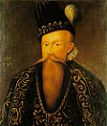

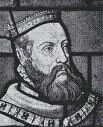


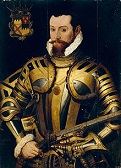

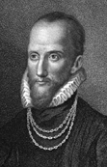

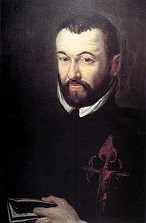


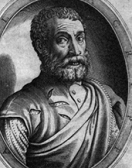


1568 On Feb. 17 after a year of hostilities on the Hungarian frontier the Ottomans under Selim I and the Hapsburgs under HRE Maximilian II sign a peace treaty, which is renewed until 1590. In Feb. after Catherine de' Medici gets in over head in playing off one faction against the other in the religious wars of France, she dismisses Michel de l'Hopital, the last anchor stopping the big Protestant Weenie Roast of 1572? On Mar. 23 the Treaty of Longjumeau in Longjumeau commune 11 mi. S of Paris ends the Second War of Religion in France. In Apr. Sultan Selim II unifies the two provinces in rebel Yemen under one gov. and prepares an expedition to quash the rebels. I'm half going crazy in here? On Mar. 25 Mary Stuart, Queen of Scots escapes from Lochleven Castle in Kinross, Scotland and attempts to reclaim her throne, but is defeated at the Battle of Langside by her half-brother the Earl of Moray on May 13; Secy. Lethington, who might have been involved in Darnley's murder flops and fights with the queen's enemies out of dislike for James Hepburn; on Apr. 3 Sir William Drury (1527-79), hired to spy on her in Lochleven writes a letter to his boss Lord Burghley about her escape to warn him; on May 16 she flees to England, and seeks refuge in the English court, but is put under house arrest by her half-sister Queen Elizabeth I for 19 years until her death, plotting until the end to become queen of England; a conference opens in York to inquire into her conduct, with Thomas Howard, 4th duke of Norfolk as pres. of the investigating commission, keeping Mary in his custody; it later reopens at Westminster; Scotland is now firmly in the control of the Knox Protestants, Moray becomes regent for James VI, and the acts of 1560 in favor of the Reformed religion are ratified by the Estates of the Realm. On May 23 the Battle of Heiligerlee in Groningen in N Netherlands sees the Protestants under William I of Orange's brothers Louis of Nassau and Adolf of Nassau score their first V against a Roman Catholic army led by Jean de Ligne, Duke of Arenberg (b. 1528), who is KIA (along with Adolf of Nassau), pissing-off the Duke of Alva, who has the Count of Egmont and the Count of Hoorn beheaded in Brussels on June 6, then leads an expedition to Groningen, annihilating Louis of Nassau's army on July 21 at the Battle of Jemmingen (Jemgum) in East Frisia (Louis escapes); the gauntlet having been thrown down, on Aug. 13 William I the Silent makes a loud formal declaration of war against the duke of Avarice, er, Alva, beginning the Dutch Eighty Years' War (Dutch Revolt) (ends 1648), during which the seven N Protestant provinces break with the 10 S Catholic provinces (modern-day Belgium) in a war of independence against the cruel Spanish Hapsburg rulers and their Roman Catholic Inquisition; "Father William" at first puts out propaganda that he's not fighting the Spanish monarchy but only foreign invaders and incompetent governors, but later converts to Protestantism and becomes a soldier of the Reformation, his Sea Beggars keeping them afloat despite defeats on land, starting next year when he leads a large army into Brabant, then watches it dissolve when he can't afford to pay them; on Oct. 20 the Battle of Jodoigne in the Spanish Netherlands (modern-day Belgium) sees 21.5K Spanish troops under the Duke of Alba destroy the rear guard of William I the Silent's 30K-man invading army, with 3K Dutch soldiers KIA vs. only 20 Spanish soldiers, forcing him to retreat into Germany; in Nov. Spanish ships carrying £85K loaned to Philip II by Genoan bankers to pay the wages of the Duke of Alva's soldiers founders off Southampton, and the English govt. confiscates the money, Elizabeth I declaring next Jan. that she would assume the loan herself, which pisses-off Philip, who orders his troops in the Netherlands to seize English ships and property; on Dec. 22 Alva makes a triumphal entry into Brussels, then sets up a statue of himself in Antwerp after demolishing two statues representing the nobles and people of the Netherlands - now I'm doing something I enjoy and making a good living? On June 11 Welf prince (since 1514) Henry V the Younger (b. 1489) dies, and his youngest son Julius, Duke of Brunswick-Luneburg (Brunswick-Lüneburg) (1528-89) becomes prince of Brunswick-Wolfenbuttel (until May 3, 1589), going on to embrace the Protestant Reformation, reform the court system, reform the tax system in favor of farmers, and found a citizen militia. On July 13 Alexander Nowell (1507-62), dean of St. Paul's in London leaves his bottle of beer by a river bank for a few days, and when he comes back it "opened with a bang" and was "very tasty", becoming the first known mention of Bottled Beer. In Aug. Sir Peter Carew (1514-75) sails to S Ireland by leave of Elizabeth I to stake a murky legal claim to lands granted to a remote ancestor by Henry II, and ends up stepping on the toes of the Anglo-Norman Butler family, headed by Protestant Sir Thomas Butler, 10th Earl of Ormonde (1531-1614), starting the Desmond Rebellions (1569-73, 1579-83) after they all step on the toes of the Roman Catholic Desmond (Gael. "south Munster") family in Munster, led by the Protestant FitzGerald (Geraldine) family, devastating Munster, slaughtering the rural pop. and stripping them of food and shelter, making them resort to cannibalism; "They looked like anatomies of death; they did eat the dead carrion and one another soon after, insomuch as the very carcasses they spared not to scrape out of their graves" (Edmund Spenser); the fear of marauders destroying their crops causes the Irish to begin relying on potatoes, ending up with overreliance on a single crop and regular famines?; by 1845 potatoes take up one-third of Ireland's cultivated land. On Sept. 30 after a conspiracy between Johan Vasa and his younger brother Charles (later Charles IX), nutso Eric XIV is declared unfit to reign, and Johan (John) III Vasa (1537-92) becomes king of Sweden (until Nov. 17, 1592). Don John (Juan) of Austria (1547-78) is given command of a Spanish naval squadron fighting Barbary pirates. The First Russo-Turkish War (ends 1570) begins over the Astrakhan Khanate, which was conquered in 1566 by Russian tsar Ivan the Terrible; first of 12 Russo-Turkish wars (until 1918). The 2nd Rebellion of the Alpujarras (first in 1499-1501) in the mountainous Alpujarra region of Granada, Spain of Moriscos (Muslim Moors who had been faking Christian conversion) begins (ends 1571), and is viciously put down by HRE Charles V's bastard son Don John of Austria. Oda Nobunaga (1534-82) enters the city of Kyoto and sets up shop in Komaki Castle, beginning a new era of unification in Japan, starting by going after the rival Saito clan, then proceeding to conquer the whole island, with the motto "Tenka Fubu" ("Everything Under the Sky"); after Ashikaga Yoshihide (b. 1538) is named Ashikagi shogun #14 then dies on Oct. 28 from disease, Oda Nobunaga marches on the Japanese capital Kyoto, gains the support of the emperor, and installs his own candidate in the succession struggle for shogun, Ashikaga Yoshiaki (1537-97) (15th and last Ashikagi shogun), brother of shogun #12 Ashikaga Yoshiteru; Jesuit missionaries are welcomed into Japan. Pope Pius V issues the Brevarium Romanum (Roman Breviary), containing the canonical daily hours of Roman Catholic prayer, based on the "Breviarium secundum usum Romanae Curiae", imposing it on the Roman Catholic Church except for the Benedictines and Dominicans; in 1974 Pope Paul VI replaces with the "Liturgy of the Hours". Early in the year Alvaro Mendana de Neyra sights Tuvalu and Ontong Java, then later discovers the Solomon Archipelago. The first modern eisteddfod (pr. eye-STETH-vode) (Welsh bardic competition) is held in Caerwys; Elizabeth I recognizes it. Juan Fernandez de Navarrete (1526-79) "El Mudo" (the Mute) becomes court painter to Philip II of Spain. A botanical garden is established in Bologna, Italy, presided over by Ulisse Aldrovandi and Andrea Cesalpino. The Co. of London Tylers and Bricklayers is incorporated. The Bannatyne Ms. by Scottish student George Bannatyne contains the first known use of the word "fuck": "wan fukkit funling", used as an insult between Scottish poets William Dunbar and Walter Kennedy. Architecture: Robert Smythson begins Longleat House in Wiltshire (finished 1574). Giacomoda Vignola (1507-73) begins the Gesu Church in Rome. Inventions: Flemish geographer-cartographer Gerhard (Gerardus) Mercator (1512-94) (Lat. "merchant") develops the Mercator Projection, a cylindrical projection for maps and charts, and pub. a a cylindrical projection for maps and charts, and pub. a World Projection showing North and South Am. separated from Europe and Asia by vast oceans, which wows the crowds and pretty much puts the flat Earthers out of biz?; the distortion shows Greenland as larger than South Am., shrinking Africa and other equatorial regions and enlarging the polar areas - motivated by white racism? Nonfiction: Camillo Agrippa (-1595), Trattato di Scienza d'Arme; fencing manual. Jean Bodin (1530-96), Reply to Malestroit; the first known analysis of the phenomenon of economic inflation, claiming that it is being caused by importation of silver and gold from South Am., making him an early proponent of the Quantity Theory of Money. Bernardino Daniello (1500-65), Commentary on Dante's Divine Comedy (posth.). Humphrey Llwyd (1527-68), Commentarioli Britannicae Descriptionis Fragmentum; coins the term "British Empire". Benito Arias Montano (1527-98) (ed.), The Royal Bible (Biblia Regia) (Antwerp or Plantin Polyglot Bible) (8 vols.) (1568-73) (Hebrew, Greek, Aramaic, Latin, Syriac); pub. by Christophe Plantin (1520-89) of Antwerp; sponsored by Philip II of Spain; based on the Complutensian Polyglot of 1514; 1,213 copies made at 70 guilders each; the first Bible to make the 5th cent. Syriac Peshitta vers. of the New Testament available to European scholars; the most important typographic achievement by a single printer in the 16th cent.?; used by the translators of the 1611 King James vers.; Spanish theologian Leon de Castro of the U. of Salamanca gets Montano in trouble for using Jewish rabbinical writings and for deleting pro-Trinitarian texts found in the Latin Vulgate but not in the original Hebrew text, such as 1 John 5:7 ("in heaven, the Father, the Word, and the Holy Ghost: and these three are one"), and it takes until 1580 for him to beat the charges. Nostradamus (1530-66), Centuries (posth.); since he had permitted ms. copies to circulate in advance, the truly elite already knew the future? Archbishop Matthew Parker (1504-75) (ed.), The Bishops' Bible; rev. eds. in 1572 and 1602; supersedes the Great Bible of 1539, and the Geneva Bible of 1557-60; trans. by a committee of bishops appointed by Elizabeth I to supposedly be free of political influence, producing an uneven product that satisfies nobody, spurring production of the 1611 King James Bible?; produced by the Church of England to succeed the Great Bible of 1539 and the Geneva Bible of 1557-60; the Old Testament and Apocrypha are translated from the original languages instead of the Latin Vulgate like the Geneva Bible. Novels: Anon., The Merry Tales of the Mad Men of Gotham; the 13th cent. Gothamites vs. King John I. Art: Pieter Brueghel the Elder (1522-69), The Faithlessness of the World. Births: English prototypical Shakespearean tragedian Richard Burbage (d. 1619) on Jan. 6; son of actor James Burbage (1531-97); brother of actor Cuthbert Burbage (1566-1636). French "L'Astree" novelist-writer Honore d'Urfe (Honoré d'Urfé), Marquis de Valromey, Comte de Chateauneuf (Châteauneuf) (d. 1625) on Feb. 11 in Marseille. English MP (1614-25) and diplomat-writer Sir Henry Wotton (d. 1639) on Mar. 30 in Bocton hall, Boughton Malherbe, Kent; educated at Winchester College, New College, and Queen's College, Oxford U.; friend of John Donne (1572-1631) and Izaak Walton (1594-1683); knighted in 1603. Italian pope (1623-44) Urban VIII (Maffeo Barberini) (d. 1644) on Apr. 5 in Florence; educated at the U. of Pisa. Italian Roman Catholic Jesuit leader (St.) Aloysius (Luigi) Gonzaga (d. 1591) in Castiglione delle Stiviere, Mantua; educated in the Florentine court of the Medici in Rome and Philip II's court in Spain; student of St. Robert Bellarmine (1542-1621; canonized in 1726; feast day: June 21. Italian composer-organist-poet Adriano (Tommaso) Banchieri (d. 1634) on Sept. 3 in Bologna. Italian Renaissance pro-science philosopher-monk Tommaso (Giovanni Domenico) Campanella (d. 1639) on Sept. 5 in Stignano, Stilo, Calabria. English printer (of Shakespeare's First Folio) William Jaggard (d. 1623) in London. Flemish (Dutch) painter Jan "Velvet" Brueghel the Elder (d. 1625); son of Pieter Brueghel the Elder (1525-69). English gardening writer Gervase Markham (d. 1636); importer of the first Arab horse to England, and proponent of the "strictly English" garden. English Plymouth Colony Pilgrim founder and preacher William Brewster the Elder (d. 1644) in Scrooby, Nottinghamshire; asst. to Queen Elizabeth I's secy. of state William Davison; has sons Love and Wrestling with wife Mary; ancestor of Lyndon LaRouche (1922-). English statesman-historian Sir Richard Baker (d. 1645) in Sissinghurst, Kent; educated at Oxford U. Deaths: German duke of Brunswick-Wolfenbuttel (1514-68) Heinrich V the Younger (b. 1489) on June 11 in Wolfenbuttel; dies after converting to Protestantism. Prussian duke #1 (1525-68) Albrecht of Hohenzollern (b. 1490) on Mar. 20 in Tapiau. French last Crusader Jean Parisot de la Valette (b. 1493) on Aug. 21 in Valletta, Malta; dies while building the new city, and is buried in the crypt of the St. John's Co-Cathedral there. English cleric and composer William Whytbroke (b. 1495). Spanish explorer-friar Andres de Urdaneta (b. 1498) on June 3 in Mexico City, Mexico. Portuguese Jewish physician Garcia de Orta (b. 1501) in Goa; after he dies the Portuguese Inquisition burns his sister at the stake then exhumes his remains and burns them in effigy. English botanist William Turner (b. 1510). Portuguese botanist Amatus Lusitanus (b. 1511) English scholar Roger Ascham (b. 1515). Dutch statesman-gen. Lamoral, Count of Egmont (b. 1522) on June 5 in Brussels (beheaded); subject of a 1787 play by Johann Wolfgang von Goethe, and an 1810 overture by Beethoven. Dutch stadtholder Jean de Ligne, duke of Arenberg (b. 1525) on May 23 in Heilgerlee, Groningen (KIA). Welsh cartographer-MP Humphrey Llwyd (b. 1527) in Denbigh. English countess Lady Catherine (Katherine) Grey (b. 1540) on Jan. 26 (TB); dies in the Tower of London's Lieutenant's house in Cockfield Hall, Suffolk on a short visit; the queen attends her funeral in Salisbury Cathedral; her hubby Lord Hertford is released from the Tower, and marries 2x more and lives to a ripe age. Spanish prince Don Carlos de Austria (b. 1545); executed at the orders of his daddy Philip II.




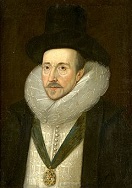

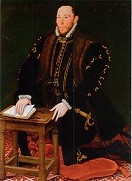
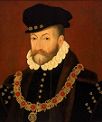

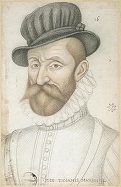






1569 A carbuncular fever epidemic in Lisbon kills 50K, incl. Portuguese poet Antonio Ferreira (b. 1528). On Feb. 2 Mary Stuart is moved to grim old Tutbury Castle in Staffordshire in the Midlands under the care of George Talbot, 6th Earl of Shrewsbury (1528-90) and his 2nd wife Elizabeth Cavendish (Elizabeth Talbot, Countess of Shrewbury) (Bess of Hardwick) (1527-1608), and the English council warns that: "She is able, by her great wit and sugared eloquence, to win even such as before they shall come to her company shall have a great misliking" to "gain rule over him, or practise for her escape", Elizabeth I commenting that there must be something "divine about the speech and appearance of the Queen of the Scots, in that one or the other obliges her very enemies to speak for her"; meanwhile Thomas Howard, 4th Duke of Norfolk (1538-72), aided by his sister Jane Neville (nee Howard), Countess of Westmorland (Westmoreland) (1533-93), wife and 1st cousin of Charles Neville, 6th Earl of Westmorland (Westmoreland) (1542-1601) (grandson of Ralph Neville, 4th Baron Neville, whose daughter Cicely Neville was the mother of Edward IV and Richard III) begin the Ridolfi Plot to marry Mary Upstart, er, Stuart to become king of a Protestant Scotland or a Catholic England (whatever), sending Florentine banker Roberto di Ridolfi (Ridolfo) (1531-1612) to Philip II; too bad, in June the Duke of Alva tells Norfolk's Spanish connection that Philip II won't go to war with England right now, and in Aug. the earl of Moray informs Elizabeth that Mary is not welcome back to Scotland; Sir Nicholas Throckmorton is imprisoned at Windsor for suspected involvement in the plot, and his diplomatic career is over although he is never put on trial; the only hope remaining is to overthrow Queen Liz? On Mar. 13 the Battle of Jarnac on the right bank of the Charente River between Angouleme and Cognac sees the Huguenots defeated by the Roman Catholic army led by marshal Gaspard de Saulx, Sieur de Tavannes (1509-75); Huguenot leader Louis I of Bourbon, prince of Conde (b. 1530) is KIA; after Adm. Gaspard de Coligny saves most of the Huguenot army and regroups in the Limousin region, they meet again on June 25 at the Battle of La Roche-l'Abeille, and this time 11K Huguenots led by Coligny accompanied by 14K troops led by Wolfgang, Count Palatinate of Zweibrucken (b. 1526) (who is KIA in Nexon, Burgundy June 11) and financed by Elizabeth I score a V over a 29.5K-man Catholic army led by the duke of Anjou; the Huguenot army heads toward Perigord, massacring 350 infantry and 250 peasants in retribution for the death of Conde. In summer a force of 20K Turks and 50K Tatars under Kasim Pasha sieges Astrakhan, while an Ottoman fleet sieges Azov and another force attempts to built a canal to unite the Volga and Don Rivers; too bad, a 30K-man Russian army scatters the workmen and their Tatar protection force, and 70% freeze or are killed by Circassians, while the fleet is destroyed by a storm, and the Astrakhan garrison under Knyaz Serebrianyi drives the siege off. This land is your land, this land is my land? On July 1 the Diet of Lublin, called by Sigismund II in 1568 unites the Roman Catholic Kingdom of Poland with the Roman Catholic Grand Duchy of Lithuania (despite Lithuanian opposition) in the Union of Lublin; Lithuania retains a separate admin. and army, with a common king and diet called the Sejm, going from an absolute monarchy to a democracy of noblemen; the autonomy of Royal Prussia is abandoned; the Duchy of Livonia (united to Lithuania since 1156) becomes a Polish-Lithuanian condominium; the Lithuanian capital of Vilnyus (Vilnius) goes on to become a center of Polish culture and Jewish learning ("the Jerusalem of Lithuania") despite plagues, fires, and Swedish and Russian invasions during the next two cents. In July Elizabeth I gets an open ulcer above the ankle, which causes her to have to travel in a litter, and doesn't heal until 1571, leaving her with a slight limp - he should have taken off his spurs before mounting her? On Aug. 16 French page Nicholas Paris (Nicholas Hubert), known as the French Paris is hanged as an accessory to Darnley's murder. On Aug. 21 duke of Florence (since Jan. 6, 1537) Cosimo I the Great de' Medici (1519-74) is crowned grand duke of Tuscany by Pope Pius V (until Apr. 21, 1574), adding Siena to his territories; the gift binds the Medicis to Spain for the next two cents. On Oct. 3 the Battle of Moncontour near Poitiers in Vienne between the Roman Catholic forces of Charles IX led by Duke Henry of Anjou and the French Huguenot forces led by Adm. Gaspard de Coligny is another D for the Huguenots, after which the Catholics take their turn at the massacre baby love game; Walter Raleigh is a minor Protestant contributor to the D. On Oct. 3 Elizabeth I has ailing Ridolfi Plot leader Thomas Howard, 4th Duke of Norfolk (1536-72) arrested and thrown in the Tower (until 1570) along with his crypto-Catholic younger brother Henry Howard, 1st Earl of Northampton (1540-1614) after she suspects him of planning to join the Northern Rising (Rebellion) (Revolt of the Northern Earls), which sees the Roman Catholic nobles of N England, led by Charles Neville, 6th Earl of Westmorland (Westmoreland) (1542-1601) and Thomas Percy, 7th Earl of Northumberland (1528-72), backed by Charles IX France and a promise of Spanish aid, and financed by Roberto Ridolfi form an army of 2.5K men (with Neville's wife Jane Howard doing much of the recruiting) to attempt Mary Stuart's liberation at Tutbury, capturing and sacking Durham, and celebrating Mass at Durham Cathedral, then marching S to Bramham Moor, planning on sieging York; too bad, on Nov. 25 Elizabeth I has Mary moved to Coventry (Lady Godiva's town) in the Protestant Midlands, foiling them; on Dec. 20 after capturing Barnard Castle on the N side of the Tees River, then marching to Clifford Moor hoping to raise support in vain (their total army only reaching 4.6K men), the rising collapses as a 7K-man army under Walter Devereux, 1st Earl of Essex (1541-76) and a 12K-man army under Edward Clinton, 1st Earl of Lincoln (1512-85) puts them on the run back to Scotland; 600-750 commoners are hanged by next Feb. 4, and 200 gentry are deprived of their estates; Neville flees to Flanders, is attained, and dies broke in Spain, and Raby Castle confiscated; Percy is captured in Scotland, deprived in 1571 in absentia of his hereditary titles and estates, shipped back to York and beheaded in 1572; his wife Jane Howard flees to the Continent, where she spends the rest of her life under house arrest; Thomas Howard is imprisoned and later pardoned; meanwhile Roman Catholic clergy are executed or flee into exile while calling on Big Papa in Rome for help. On Oct. 18 the Ottomans capitulate to the French, allowing them free passage into Ottoman waters, requiring vessels from other Euro countries to fly the French flag in order to enjoy the same privileges; the treaty is renewed through May 1740. On Oct. 19 the first stone is placed in a new wall around the Prostitutes' Quarter in Rome, ordered by Pope Pius V; completed 1 mo. later, it has only two gates so that the pope himself can decide when hos and johns can cum and go? Welcome back to The Most Outrageous Moments? On Nov. 30 Francisco de Toledo, Count of Oropesa (1515-84) becomes viceroy #5 of Spanish Peru (until May 1, 1581), instituting repressive measures on the native pop. to make them give up their independence, er, paganism and ancestor worship and reduce them to slaves, establishing the corregimientos (govt. districts), a tribute system, the mita (forced Indian labor), and forcing them out of the country into the towns where he can have them brainwashed and regimented, becoming known as "the Virreinal Solon"; he also orders a visita (economic survey and demographic census) so he can give his Spanish lords every peseta possible? The Mughals under Akbar the Great attack the Rajput Ranthambore Fort. Thomas Cartwright (1535-1603) is appointed Lady Margaret prof. of divinity at Cambridge U., where he first formally outlines the wonderful Puritan program in black and white; too bad, next Dec. John Whitgift becomes vice-chancellor, and fires him. English trade with the Netherlands is put under an embargo (ends Mar. 1573). The Swedish 2nd largest island of Oland (Öland) in the Baltic Sea off Smaland is given to the Hanseatic League as a hunting grounds, and the locals are reduced to serfs. Roman Catholic bishop Diego de Landa, called back to Spain for his practices of torturing Mayans during interrogation is cleared by a "committee of doctors", and sent back to become official bishop of Yucatan in 1571. After resigning his position as chief rabbi and giving his fortune to the poor, Spanish-born Jewish sage Radbaz (David ben Solomon ibn Zimra (1479-1573) moves to Jerusalem, but soon relocates to Safed to escape high Ottoman taxes, spending the rest of his life on the rabbinical court. A public lottery is held in London to finance repairs to the port. Sailors working for English slaver John Hawkins introduce the word "shark" to England when they bring one to exhibit, based on the Mayan word "xoc". Architecture: Selimiye Mosque in Edirne, designed by Mimar Sinan (1489-1588) is begun (finished 1574) (his best work?). Inventions: Jacques Besson (1540-76) of France invents a screw-cutting machine and an ornamental turning lathe. Tycho Brahe begins construction of a 19-ft. quadrant and a 5-ft.-diam. celestial globe in Augsburg. Nonfiction: Jacques Besson (1540-76), Theatrum Instrumentorum (Theatrum de Instrumens Mathematiques et Mechaniques); his screw-cutting lathe designs, incl. cams and plates, making him the 2nd Leonardo da Vinci? Henry de Bracton (1268-), On the Laws and Customs of England (posth.); tr. Richard Tottel. Philip van Marnix (1540-98), Biencorf der Heiligher Roomscher Kercke (The Roman Beehive); pub. during his exile in Fiesland; one of the bitterest satires ever directed against the Roman Catholic Church, getting translated and distributed throughout Europe. Gehard Mercator (1512-94), Cosmographia. Poetry: Alonso de Ercilla y Zuniga (1533-95), La Araucana; epic of the Spanish conquest of Chile; first Spanish epic poem about the New World - from the winner's viewpoint, after the detergent is applied? Art: Anon., Unknown Girl; shows how great English girls dress at this time? Hans Eworth (1520-74), Queen Elizabeth Confounding Juno (Elizaeth I and the Three Goddesses). Births: Italian duke of Parma and Piacenza #4 (1592-1622) Ranuccio I Farnese (d. 1622) on Mar. 28; son of Alessandro Farnese (1545-92) and Maria of Portugal (1538-77); great-nephew of Henry I of Portugal (1512-80). English poet Sir John Davies (d. 1626) on Apr. 16 in Tisbury, Wiltshire; educated at Queen's College, Oxford U.; not to be confused with John Davies of Hereford (1565-1618). German Thirty Years' War Protestant gen.-poet Count Georg Friedrich von Hohenlohe-Neuenstein-Weikersheim (d. 1645) on Sept. 5 in Neuenstein; educated at the U. of Vienna. Indian Mughal emperor #4 (1605-27) (Muslim) Nuruddin (Arab. "Light of the Faith") Salim (Arab. "Peace") Jahangir (Pers. "Conqueror of the World") (d. 1627) on Sept. 20 (Aug. 31 Old Style) in Sikri (near Agra); son of Akbar the Great (1542-1605); father of Shah Jahan (1592-1666). Italian Baroque poet Giambattista Marini (Marino) (d. 1625). Flemish Jesuit hagiographer Heribert Rosweyde (d. 1629). Spanish dramatist Guillen (Guillén) de Castro y Bellvis (d. 1631) in Valencia. Irish priest-scholar Geoffrey Keating (Seathrun Ceitinn) (d. 1644) in Burgess, Ballylobby, County Tipperary. English "Salve Deus Rex Judaeorum" poet (first prof. woman English poet) Emilia Lanyer (Lanier) (Aemilia Bassano) (d. 1645); mistress of Henry Carey, 1st baron Hunsdon (cousin of Elizabeth I). Deaths: Danish marshal Otte Krumpen (b. 1473); last of his family line. English Bible scholar Miles Coverdale (b. 1488) on Jan. 20 in London. Spanish preacher St. Juan de Avila (b. 1499) on May 10 in Montilla, Cordoba. English prelate Edmund Bonner (b. 1500). Polish poet Nikolaj Rej of Naglowice (b. 1505). Russian metropolitan St. Philip II of Moscow (b. 1507) on Dec. 12 (murdered). Portuguese Jewish financier Dona Gracia Mendes (b. 1510). Christian theologian Sixtus of Siena (b. 1520). Flemish painter Pieter "Peasant" Brueghel the Elder (b. 1522) on Sept. 9. German Count Palatinate Wolgang of Zweibrucken (b. 1526) on June 11. Portuguese poet Antonio Ferreira (b. 1528) on Nov. 29 in Lisbon (carbuncular fever). French prince of Conde (b. 1530) on Mar. 13 (KIA in the Battle of Jarnac). English composer Thomas Caustun (b. ?).